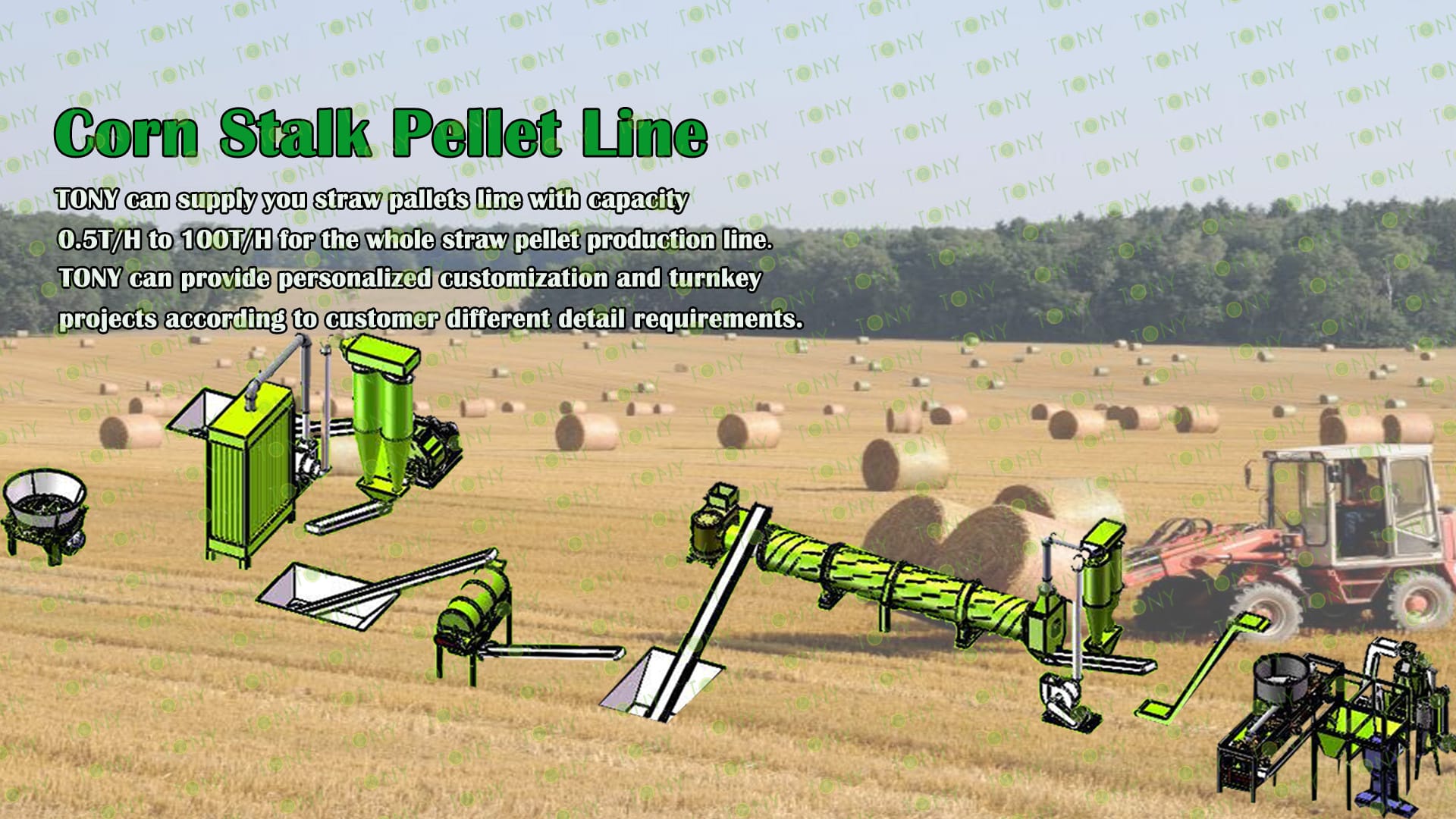
TONY Design 4-5Ton/Hour Corn Stalk Pellet Production Line Specification
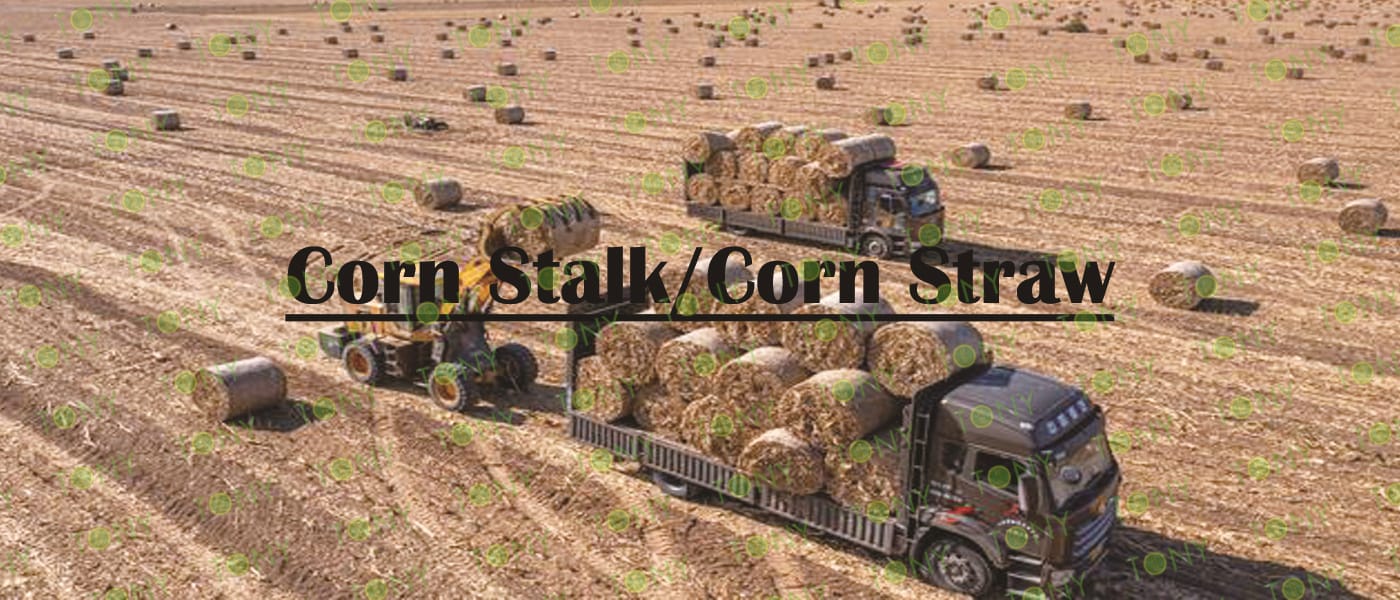 Corn stalks, as a by-product of corn production, are directly related to corn production. According to statistics, the annual global corn production is as high as billions of tons, and each ton of corn produces about two tons of straw. This means that the total amount of corn straw in the world can reach tens of billions of tons. This huge figure not only reveals the huge market potential of corn straw, but also reflects its important role in agricultural waste management.
Corn stalks, as a by-product of corn production, are directly related to corn production. According to statistics, the annual global corn production is as high as billions of tons, and each ton of corn produces about two tons of straw. This means that the total amount of corn straw in the world can reach tens of billions of tons. This huge figure not only reveals the huge market potential of corn straw, but also reflects its important role in agricultural waste management.
The global corn planting area is vast, and the amount of corn straw produced each year is huge, which provides a huge raw material base for the corn straw market. However, due to the limitations of corn straw recycling and utilization technology, as well as the neglect of straw resources in some regions, the actual amount of corn straw entering the market is far lower than the potential production capacity. The "2023-2028 China Corn Straw Industry Market In-depth Research and Development Prospects Investment Feasibility Analysis Report" pointed out that my country's corn straw feed accounts for 20.2%, base material and raw material accounts for 1.9%, edible fungus base material accounts for 2.28%, fuel accounts for 9.31%, and returning to the field and others account for 66.31%.
In summary, the scale of the corn straw market is showing a steady growth trend worldwide. From a byproduct of agricultural production to a multifunctional resource, the value chain of corn straw continues to extend, and its market potential is huge. As the global demand for sustainable agriculture and renewable energy increases, the market size of corn straw is expected to continue to expand, making greater contributions to the development of the agricultural economy and environmental protection.
Straw Burning Has Many Disadvantages But No Benefits
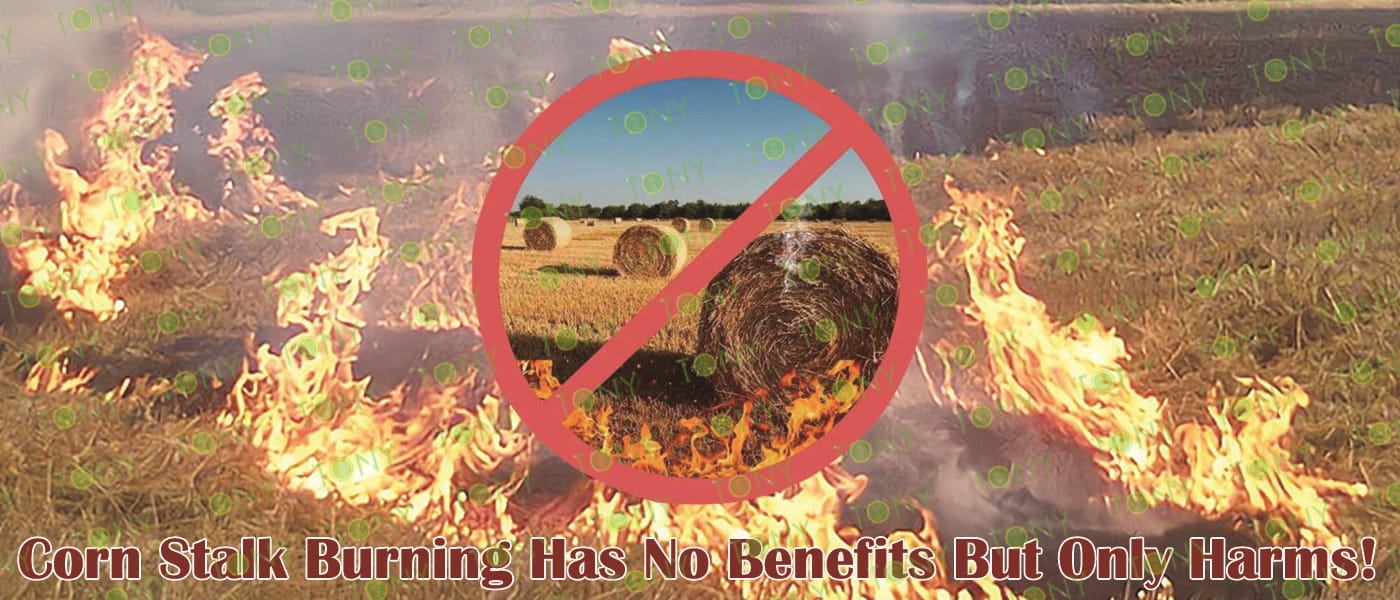
The prohibition of burning corn stalks is beneficial to the country and the people!
What are the hazards of burning corn stalks?
Air Pollution: Burning corn stalks will produce a large amount of nitrogen oxides, sulfur dioxide, hydrocarbons and smoke, which will cause serious pollution to the atmospheric environment. In addition, secondary pollutants such as ozone will be produced during the burning process, further exacerbating air pollution.
Human Health Hazards: Toxic chemicals produced by burning, such as polycyclic aromatic hydrocarbons, nitrogen oxides and sulfur oxides, will pose a threat to human health. These substances will irritate the eyes, nose and throat, causing symptoms such as coughing, chest tightness, and tears, and may cause bronchitis in severe cases.
Soil Damage: Burning straw will directly kill beneficial microorganisms in the soil, destroy soil structure, reduce humus and organic matter, cause soil compaction, and affect the yield and quality of farmland crops.
Traffic Safety Hazards: The smoke produced by burning will reduce air visibility, affect road traffic and aviation safety, and easily cause traffic accidents.
Fire Risk: Burning corn stalks can easily ignite the surrounding flammable materials, causing fires, especially near forests. Fires are difficult to control and will cause serious economic losses.
In order to reduce the harm caused by burning corn stalks, the following measures can be taken:
Returning corn stalks to the field: Crush the stalks and return them directly to the field to increase soil organic matter and improve soil structure.
Biomass energy utilization: Use the stalks for biomass power generation or heating to achieve resource recycling.
Feed Utilization: Use the stalks as animal feed to increase their economic value.
Composting: Compost the stalks for agricultural production to reduce the use of chemical fertilizers.
Through these measures, the harm caused by burning corn stalks can be effectively reduced and sustainable resource utilization can be achieved.
1. Overview Of Global Straw Resources
Straw refers to the residue of the immature part of crops and is an important agricultural by-product. Straw can not only be used as animal feed and fertilizer, but also in biomass energy, pulp and paper, biomedicine and other fields. According to statistics, there are more than 100 plants in the world that can produce straw, among which the top 10 plants that account for straw production are corn, rice, wheat, soybeans, peanuts, cotton, potatoes, sugarcane, cranberries and wheat straw.
2. Distribution Of Straw Resources
1). Asia
Asia is one of the regions with the richest straw resources in the world, including China, India, Pakistan, Vietnam and other countries. China is one of the countries with the richest straw resources in Asia, with an annual straw production of more than 2 billion tons, most of which is used to produce biomass energy and organic fertilizers.
2). Europe
Europe is one of the regions with relatively rich straw resources in the world, including Russia, France, Germany, Poland and other countries. EU countries regard straw as a renewable energy source, and straw plays an important role in EU energy consumption.
3). North America
North American countries include the United States, Canada and Mexico. These countries have relatively rich straw resources, which are mainly used in power generation, paper production, biodiesel and other fields.
4). Africa
Africa is one of the regions with relatively scarce straw resources. Most of the straw is used as fuel, and a small amount is used for fertilizer and feed.
5). South America
South American countries have relatively scarce resources. Straw is mainly used in the production of pulp and paper, animal feed and fertilizer.
6). Australia
Australia has relatively limited straw resources, which are mainly used to produce biomass fuel and fertilizer.
3. Conclusion
Globally, Asia, Europe and North America have relatively rich straw resources, while South America, Africa and Australia have relatively scarce straw resources. Among them, China is one of the countries with the largest straw production. In the future, with the continuous enhancement of environmental awareness, the utilization value of straw resources will continue to be explored.
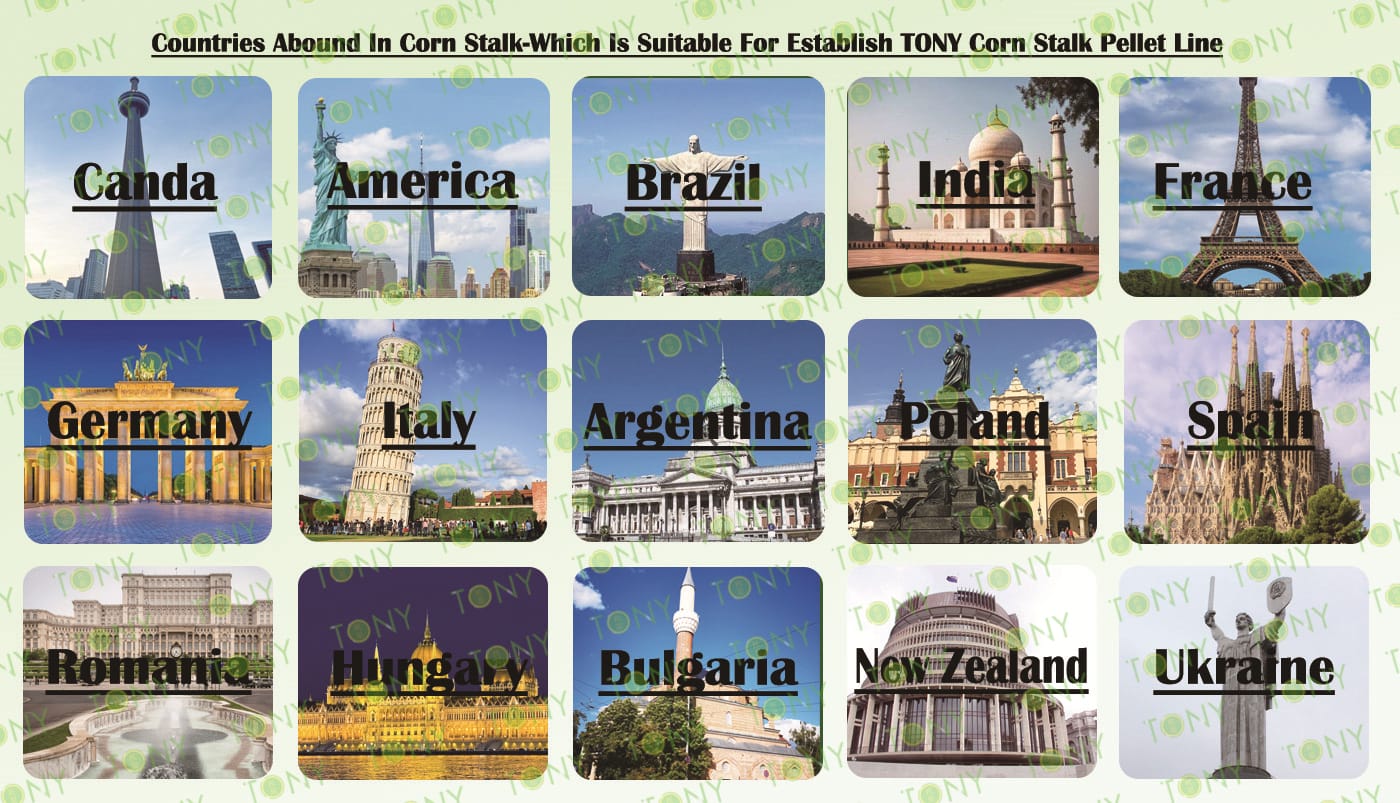

Biomass Corn Stalk Pellet production line technology is becoming more and more mature, and pellet fuel has entered the stage of industrial application.
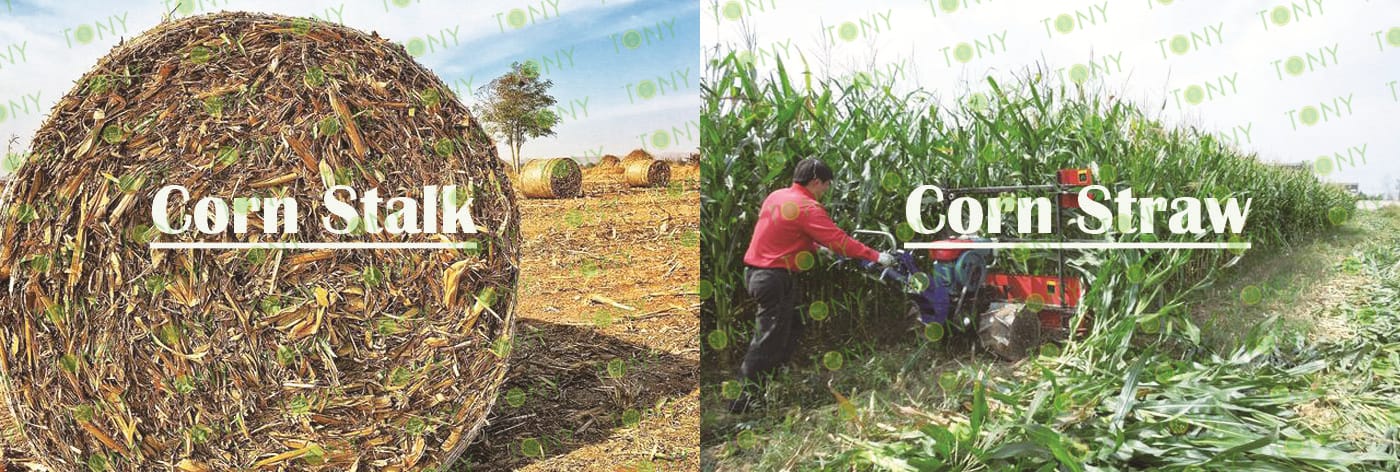
For a long time, the treatment of corn straw is a major challenge faced by many countries, using corn straw to make biomass pellets can realize the resource utilization of corn straw and realize the transformation of waste into treasure, which is of great significance for the sustainable development of agriculture, farmers' increase and income generation and create a green ecological environment.
Raw materials can be purchased locally according to customer conditions, and investors can produce qualified products as long as they are produced in accordance with the operating procedures, which has a high return on investment and broad application prospects, especially for those owners who have a lot of corn straw resources, raw materials have no cost, and the conversion from raw materials to finished products can be achieved.
Corn Stalk production line can not only meet the huge demand of ordinary families for clean energy, but also can be applied to industrial energy, large-scale production can also apply for state subsidies, which is the direction of industrial policy advocacy in many countries.
Crop stalk pellet fuel technology belongs to the field of biomass energy application. In the wave of green development, corn stalk pellets are becoming more and more popular, Without adding any additives, Crop stalk can be made into pellet fuel with high density, high molding rate and high calorific value. A small amount of steam is needed to produce pellet fuel. The product can not only be used as fuel for special boilers, heating furnaces, fireplaces, etc., but also as feed for livestock.So, for the raw material corn stalk, what are the aspects of the impact on the quality of biomass pellets?
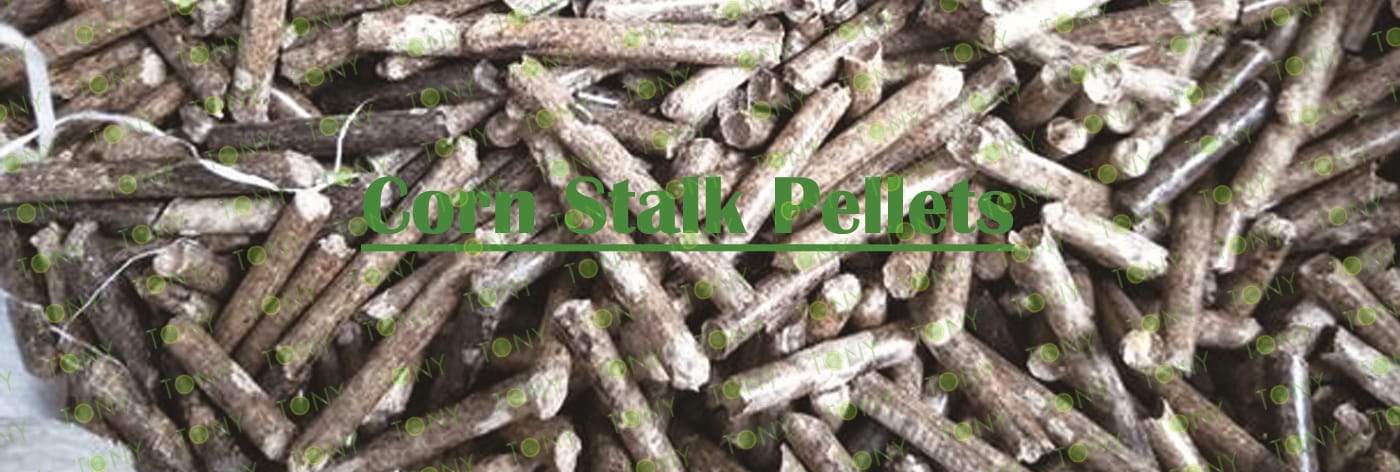
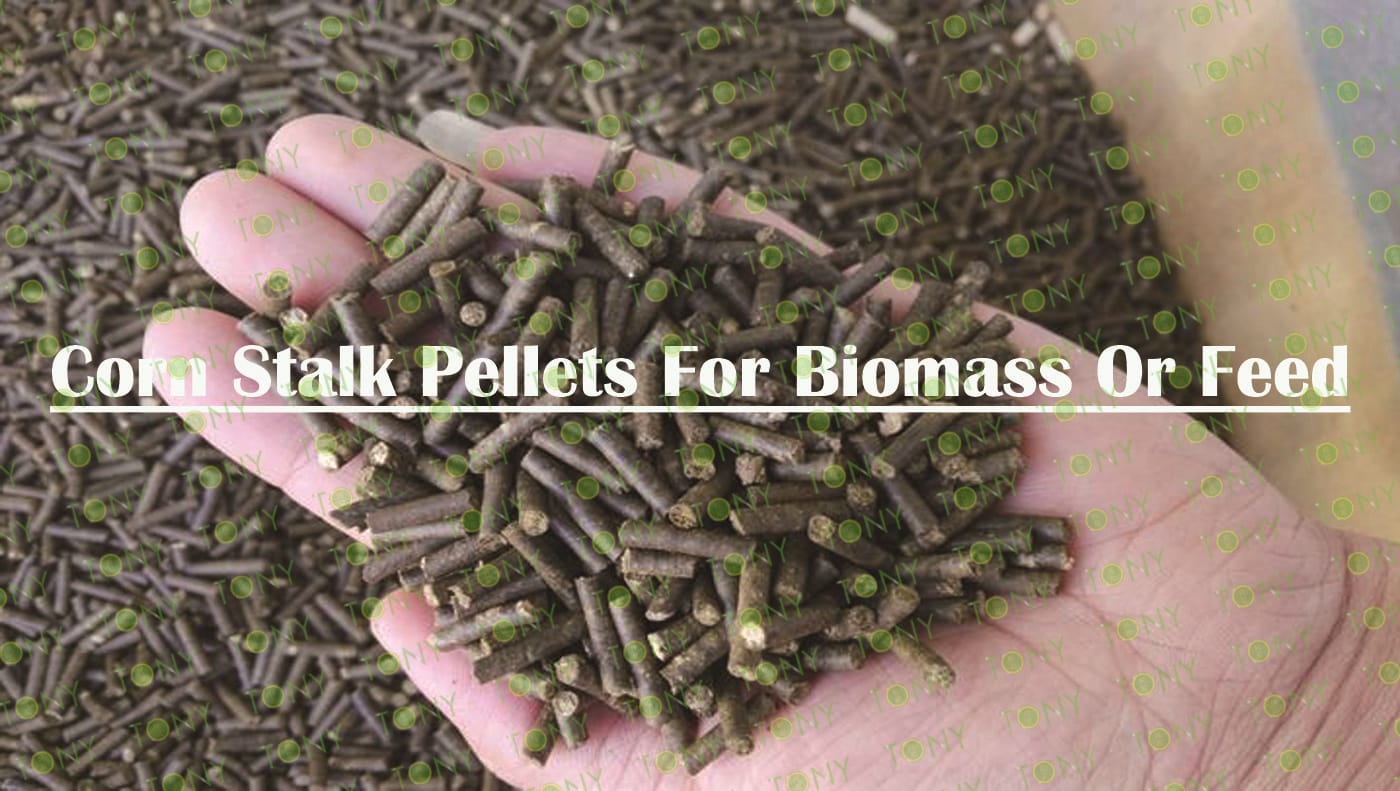
1. Moisture Content Of Corn Stalks.
The moisture content of the raw material is an important factor. If the moisture is too high, the heat transfer rate in the body during granulation will be reduced, and the evaporated water will form high pressure steam in the hole of the molding mold, making the produced particles have low density, cracks on the surface and easy to break; If the moisture content is too low, it requires a high molding pressure, which not only increases the energy consumption of biomass during the drying process, but also prone to the phenomenon of boring and blocking, and even cause the spindle to bear too much torque and break. The moisture content of the raw material is too high or too low to make the pellet form well. Therefore, for the production of biomass particles, the industry recognized that the most suitable humidity is 10-15%.
2. Grain Size Of Corn Stalk Used For Granulation.
Generally, raw materials with small particle size are easy to be compressed, and raw materials with large particle size are difficult to be compressed. That is, the smaller the particle size, the easier it is to form. However, if the raw material is too small, it will lead to too much powder mixed in the finished product. Therefore, the particle size of the raw material should be controlled to ensure that the strength is small and easy to inhibit, and that the lignin that can fully release the wood chips can be fully released. For finished pellet fuel with a diameter of 8-10mm, the particle size of the raw material is usually required to be 3-5mm. The particle size of the raw material also affects the efficiency of the granulator and the quality of the molded product. For example, when the particle size of the raw material is large, the granulator will not work effectively, the energy consumption is large, the output is small, and the particle quality is not good.
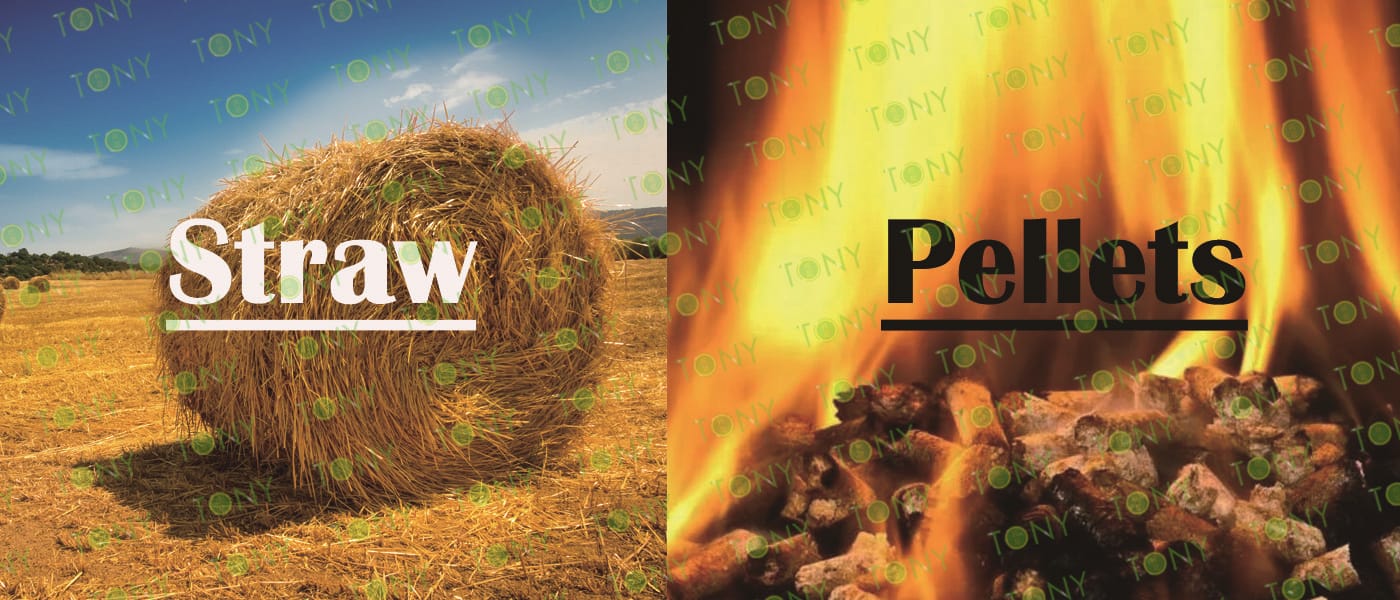

The following is the benefit analysis of making biomass pellets from corn stalks:
1. Economic Benefits
(1)Raw material cost estimate granular fuel raw material for corn straw, corn straw in many countries are a huge agricultural resources, many times the treatment is burned on the spot, both a waste of resources and pollution of the environment if the customer has enough straw resources do not need to buy, if the purchase of straw, the cost of corn straw is also very low.
(2)Processed biomass pellets as fuel can be used for self-use and can be sold, because with the global pursuit of green ecological environment, abandoning traditional fuels such as coal is the trend, the demand for biomass fuels is increasing, and the benefits are more considerable.
2. Environmental Benefits
Improper disposal of crop straw will produce certain pollution to the environment. The crop straw is made into pellet fuel, which is burned by a special gasification boiler, the thermal efficiency reaches 8l %, and the CO2 and SO2 are close to zero emissions, which can replace non-renewable fuels such as coal and oil, and reduce the impact of waste on the environment. The calculation shows that 1t particle fuel can effectively improve the quality of air environment.
3. Social Benefits
The completion of the corn stalk granule production line project can not only increase farmers' income, but also expand employment and reduce social unemployment; Secondly, the products can replace non-renewable energy, solve the energy crisis, and have certain social benefits for the establishment of a sustainable energy system and promote the development of the national economy.
4. Popularization And Application Prospect
Biomass pellet fuel" uses discarded corn stalks as raw materials, local materials, local production, reduce the cost of agricultural waste transportation, and reduce pollution in the transportation process, its products have the characteristics of energy saving, environmental protection, saving non-renewable resources, and alleviate the contradiction of power and oil shortage.The demand for biomass pellet fuel is bound to increase significantly, as a clean, renewable energy, currently in many countries have entered the stage of industrial production.

1.Renewable Energy
Straw is a green plant, is a renewable energy, in theory, with biomass energy can achieve zero emissions of carbon dioxide, to control climate warming is very beneficial. Biomass energy raw materials such as corn stalks can be deeply processed into granular fuels with higher heat and higher density, which can be used to replace fossil energy such as coal and oil, and is an internationally recognized clean energy. The biomass energy fuel itself contains very low S content, less than 1/10 of coal, and the sulfur dioxide generated by combustion is very small, which is a natural renewable energy suitable for sustainable development strategy, with the characteristics of inexhaustible and inexhaustible.
2.It Is A Low-Pollution Fuel
The pellet fuel made of corn stalk as the main component is low pollution. The ash content of the fuel is 7.99%, the sulfur content is 0.07%, and the volatile content of combustible base is 83.61%. The ash content of the fuel is 70% lower than that of coal with similar low heating value, and the sulfur is about 90% lower than that of low-sulfur coal (1%). According to the test on the boiler burning straw fuel, the emission of sulfur dioxide is only 32m/m3, the smoke is less than 50mg/m3, and because the oxygen content of straw fuel is 3-4 times larger than that of coal, the heavy hydrocarbons are less, the combustion effect is good, and the blackness of the smoke is lower than Ringmann +1 level.
3.Economical And Reasonable, Aide Range Of Application
Processing corn stalk into pellet fuel has a calorific value of 15,100 thousand 16,800 kJ/kg, which is significantly lower than the cost of coal, diesel and natural gas. Biomass energy particles have superior environmental performance and reproducibility. Because of the high volatile content and inflammability of straw fuel, it has a large application space. Such as less than 1t/h coal-fired boilers, tea bath furnaces, drying, heat treatment of low-temperature furnaces and other equipment, the furnace slightly improved, can be directly burned, for relatively large capacity of boilers and special purpose furnaces, after taking the corresponding measures, straw fuel can also be applied.
4.High Combustion Efficiency And Energy Saving
Due to the high volatile content of straw fuel, less ash, less moisture, flammable, mechanical, chemical, smoke exhaust incomplete combustion heat loss is small, combustion efficiency up to 95% or more. Under the same conditions, the thermal efficiency is more than 7% higher than that of coal-fired furnaces, and energy saving is about 10%.


1. The Working Principle Of Corn Stalk Biomass Pellet Processing Equipment
Corn stalk biomass pellet processing equipment is the bale or packet of corn stalk and other biomass raw materials chopped, compressed into pellet fuel processing equipment, its working principle is through the shredder and other pretreatment equipment will be corn stalk raw materials chopped, and then pressed through the pelletizing machine, and finally made in line with the quality standards of pellet biomass fuel.
2. Characteristics Of Corn Stalk Biomass Pellet Processing Equipment
(1) Corn stalk biomass pellet processing equipment has the characteristics of high efficiency and low energy consumption, which can rapidly process biomass raw materials into fuel pellets, improving production efficiency.
(2) Biomass pellet machine has a variety of specifications of the mold, according to different biomass raw materials to choose the corresponding mold for processing, improve the adaptability of processing.
(3) The processing equipment of biomass pellets has the characteristics of high automation and good safety, effectively reducing labor intensity and improving production efficiency.
(4) The quality and specifications of pellet biomass fuel processed by corn stalk biomass pellet processing equipment are stable and meet the requirements of production standards.
3. Application Scenarios Of Corn Stalk Biomass Pellet Processing Equipment
(1) Domestic Heating And Living Energy: biomass pellets made from corn stalks have a high combustion efficiency, are cleaner and easier to store.
(2) Biomass Industrial Boilers: In order to create a green ecological environment, many countries are gradually banning coal combustion. Straw particles can replace coal as the main fuel of industrial boilers, burning fully, low ash, to solve environmental pollution, environmental health.
(3) Biomass Power Generation: straw particles are renewable resources that can be used as fuel for thermal power generation
In summary, corn stalk pellets have broad development prospects and can be used in various fields of production and life.

1.Capacity:4-5 Ton/Hour
2.Raw materials:Bales of corn stalks, wheat stalks, cotton stalks, etc.
3.Moisture:Wet type ,about 40-55%.
4.Application:All kinds of Crop straw.
Suitable customers:Green energy companies, large farms, private growers and other customers with advantages in straw raw materials.
5.Finished Pellets Markets:Large power plants (domestic customers, as well as Japan and South Korea, mainly South Korea more), domestic heating, industrial heating, combustion heat, heating heating, boiler room, school canteen, foundry heat source.

1. Project Name:Corn Stalk Pellet Line
2. Raw Materisl:Bales of corn stalks
3. Moisture Of Raw Material:Wet Type 45-55%
4. Capacity:4-5Ton/Hour
5. Process:Grinding Process→Fine Crushing Process→Soil Removal Process→Drying Process→Pelleting Process→Cooling Process→Packing Process
6. Main Machine:Straw Cutter,Hammer Mill,Soil RemovelScreener- Rotary Drum Dryer,TONY Pellet MachineTYJ551-Ⅲ-132KW,Pellets Cooler,Packing Machine And Belt Conveyors
7. Total Power:About 710KW
8. Need Area:About 1000-1100㎡
9. Project Country:Ukraine
10. Voltage:380V,50HZ

|
Project Brief Introduction: 1.Product Name:Corn Stalk Pellet line 2.Capacity:4-5T/Hour 3.TONY Brand 4-5Ton/Hour Corn Stalk Pellet Line Project Process 4.Main Machine:Straw Cutter,Hammer Mill,Soil Removel Screener- Rotary Drum Dryer,TONY Pellet Machine TYJ551-Ⅲ-132KW,Pellets Cooler,Packing Machine And Belt Conveyors 5.Total Power:About 710KW 6.Need Area:About 1000-1100㎡ 7.Country:Ukraine 8.You Can Contact TONY For More Details. 9.TONY Can Supply You With 3D Layout. |
Project Layout For Customer |
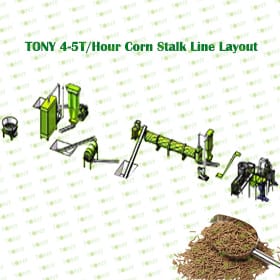 |
|


|
How to use TONY pellet line to proceed from corn stalks into pellets? It mainly contains the following steps and machines as following: 1.To Use TONY Straw Cutter To Grind Corn Straw Bales φ ≤2500mm Into 60-70mm Pieces. 2.To Use TONY Hammer Mill To Crush 60-70mm Bigger Pieces Into 8-14mm Sawdust. 3.To Use TONY Soil Removel Screener To Sift Out The Sawdust Mixed With Soil Into Sawdust Without Soil. 4.To Use TONY Rotary Drum Dryer To Dry The 45-55% Sawdust Into 10-15% Sawdust 5.To Use TONY Vertical Ring Die Pellet Machine To Products Pellets With φ6-8mm. 6.To Use TONY Galvanized Cooler To Cool Pellets From 80-90℃ To 20-30℃. 7.To Use TONY Semi-Auto Packing Machine To Packing Pellets To 15-50Kg/Bags. You Can Contact TONY To Get For More Details Information And Quotation. TONY Can Supply You Products As Above With Competitive Price And Excellent Quality. |
|
|||||||||||||||||||||||||||||||||||||||||||||||||||||||



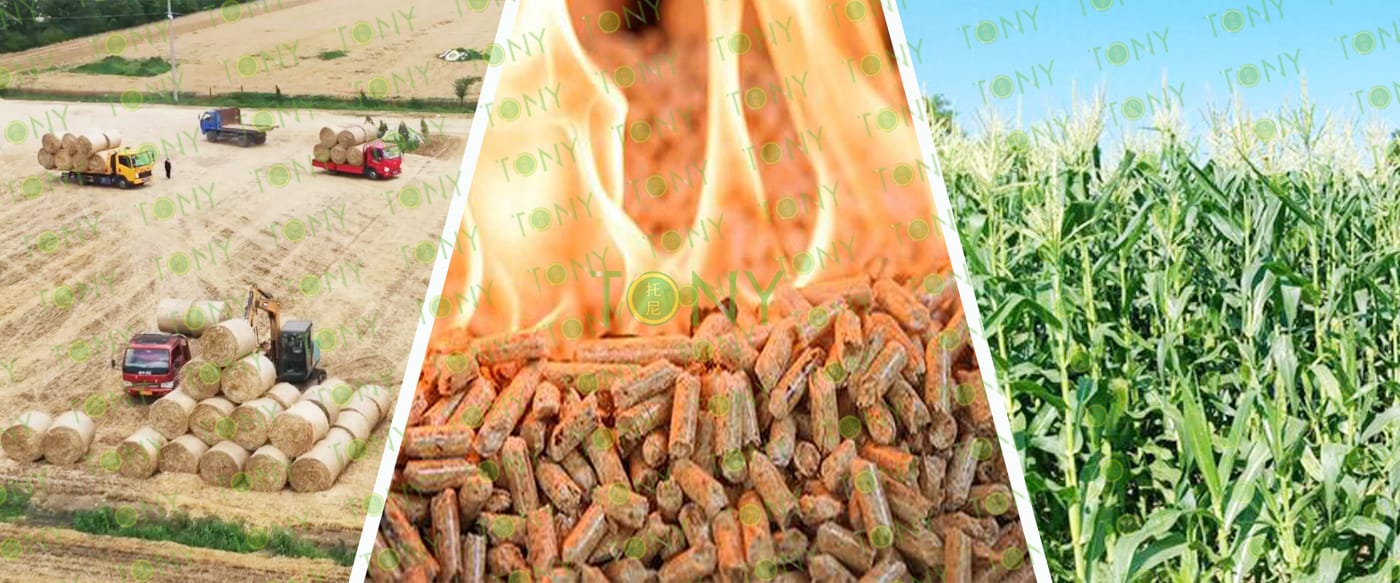
Following TONY Will Introduce For You For All The Necessary Machinery That Will Be Used For The Whole Pellet Production Line. Some machines can be custom made by customer according to different customer's detailed demand.Contact TONY for more details with quotation and layout.
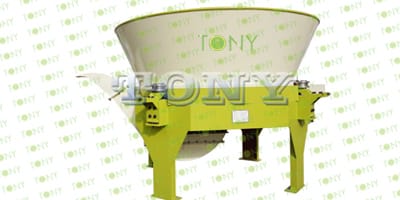 |
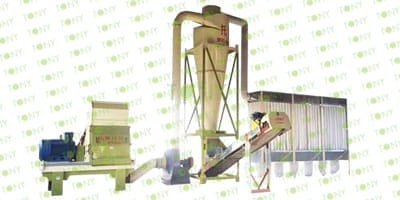 |
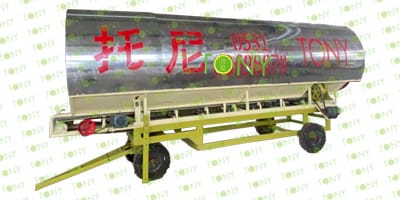 |
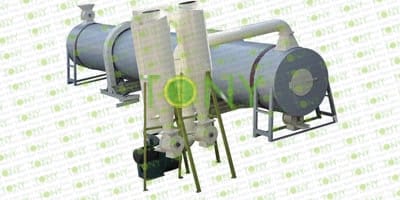 |
| Straw Cutter | High Efficient Hammer Mill | Soil Removel Screener | Rotary Drum Dryer |
|
1.To Grind Corn Straw Bales Diameter <2.5m Into 60-70mm Pieces 2.Model:TPX3000-2blades-24hammers 3.Capacity:6-12Ton/Hour/Sets |
1.Crush 60-70mm Pieces Into 8-14mm Sawdust. 2.Model:TFD75-132 3.Capacity:4-5.5Ton/Hour/Set |
1.Sift The Soil-doped Sawdust Into Clean Sawdust 2.Model:TTG1.8-6 3.Capacity:4-5Ton/Hour/Set |
1.To Dry The 45-55% Sawdust Into 10-15% Sawdust. 2.Model:THGD2* 18.65 3.Capacity:4-5Ton/Hour/Set |
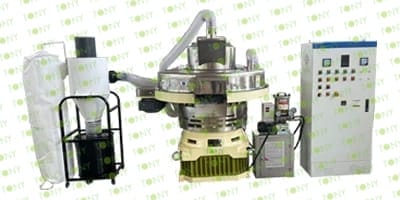 |
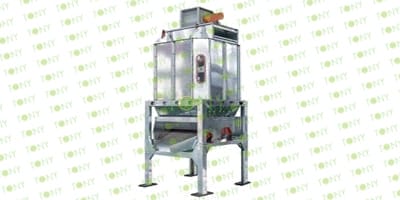 |
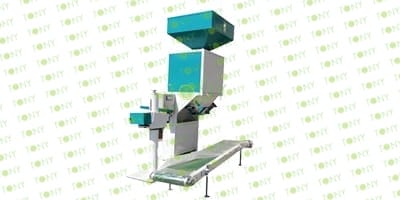 |
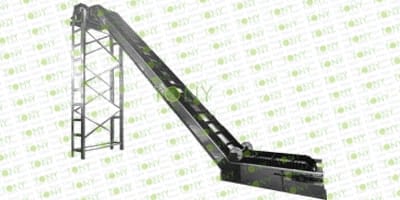 |
| Vertical Ring Die Sawdust Pellet Machine | Galvanised Cooler Separator | Semi- Auto Packing Machine | Belt Conveyor |
|
1.Model: TYJ551-Ⅲ-132KW*2 Sets 2.Capacity:2-2.5Ton/Hour/Set 3.New 304SS Type |
1.To Cool Pellets From 80-90℃ to 20-30℃ 2.Model:TLN 3.Capacity:4-5Ton/Hour |
1.Packing Pellets To 15-50KG/Bags. 2.Model:TBF-50 3.Capacity:4-5Ton/Hour |
1.Transport Straw Pieces,Sawdust,Pellets. 2.Width:60cm *8 Sets 3.Capacity:Designed With The Whole Line |

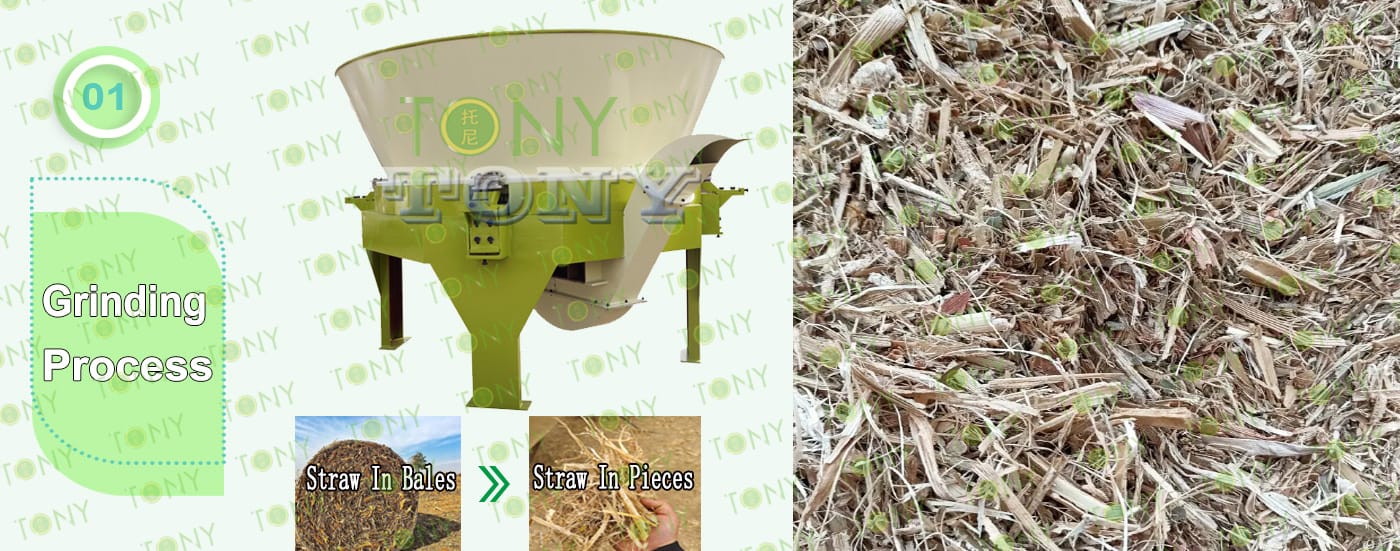
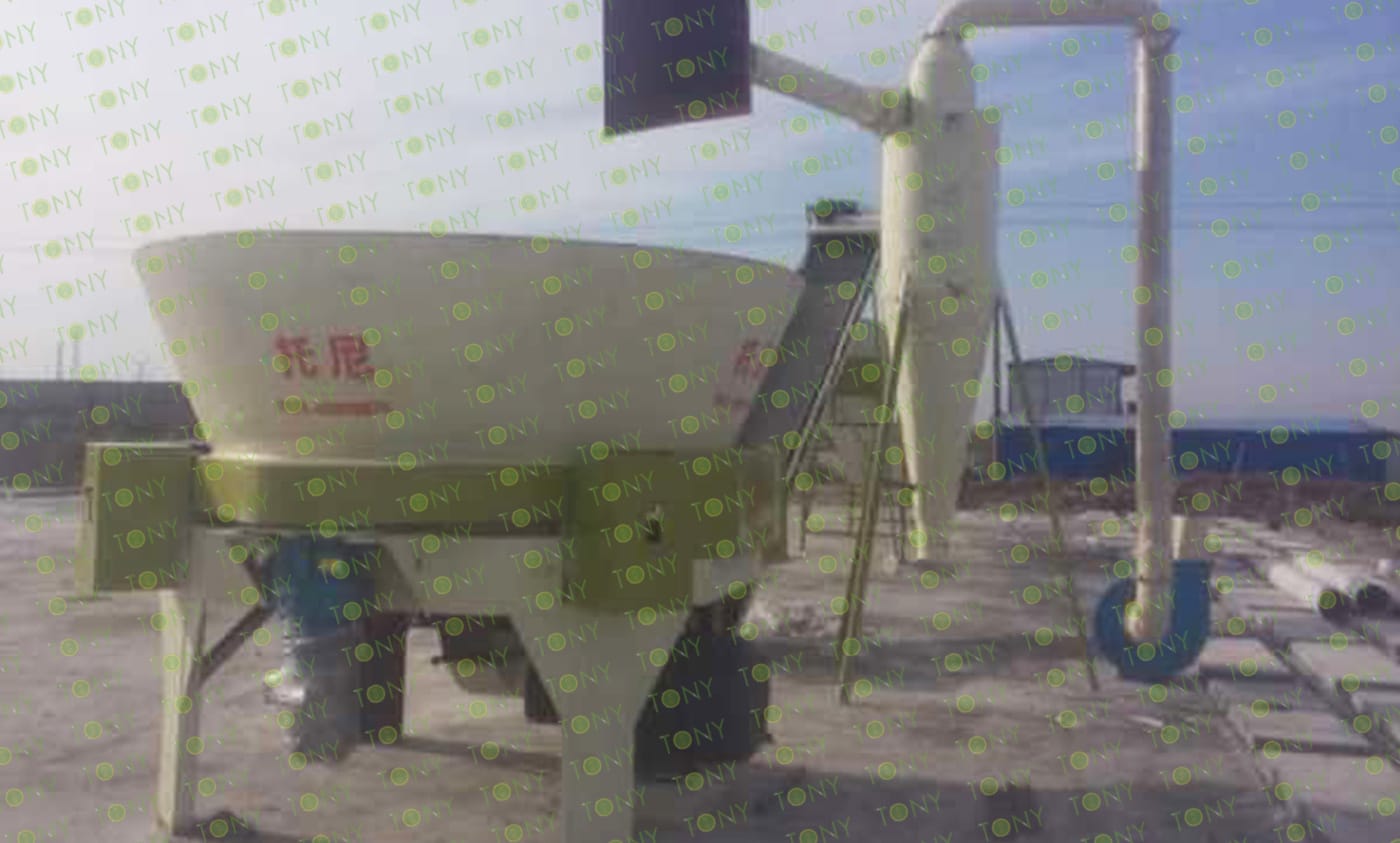
|
1.Grinding Process: A.The process is mainly used to grind corn stalk bales within 2.5m in diameter into corn stalk pieces. The rotary cutting mode of the outer chain of the gear, the rotary cutting rotor blade is sharp, and the blade types are various, which can be rotated to cut various bundles of corn stalks with different diameters,different thicknesses,different lengths and different water contents. B.This customer use TONY Brand TPX3000 model with 2 hard blade and 24 hammers. Main Parts: (1)TONY's new rotary cutting machine (2)Turntables that can store large quantities of materials (3)High-quality brand motor, strong power (4)Electronic control system allows the equipment to be used normally (5)Contact TONY for more details with quotation. |

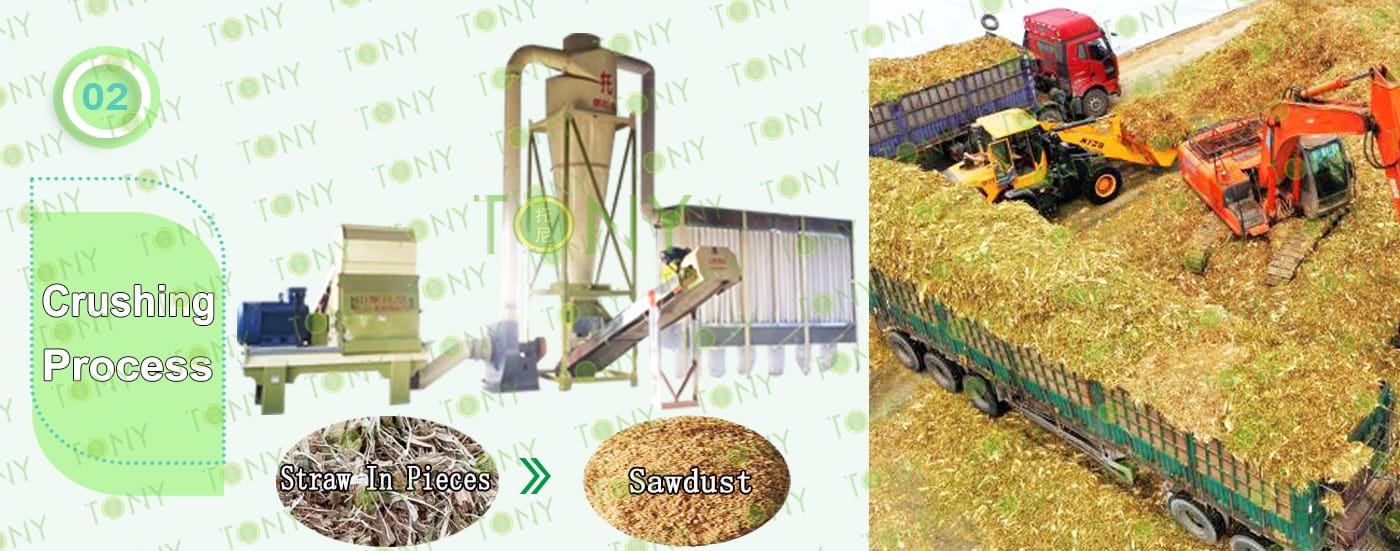
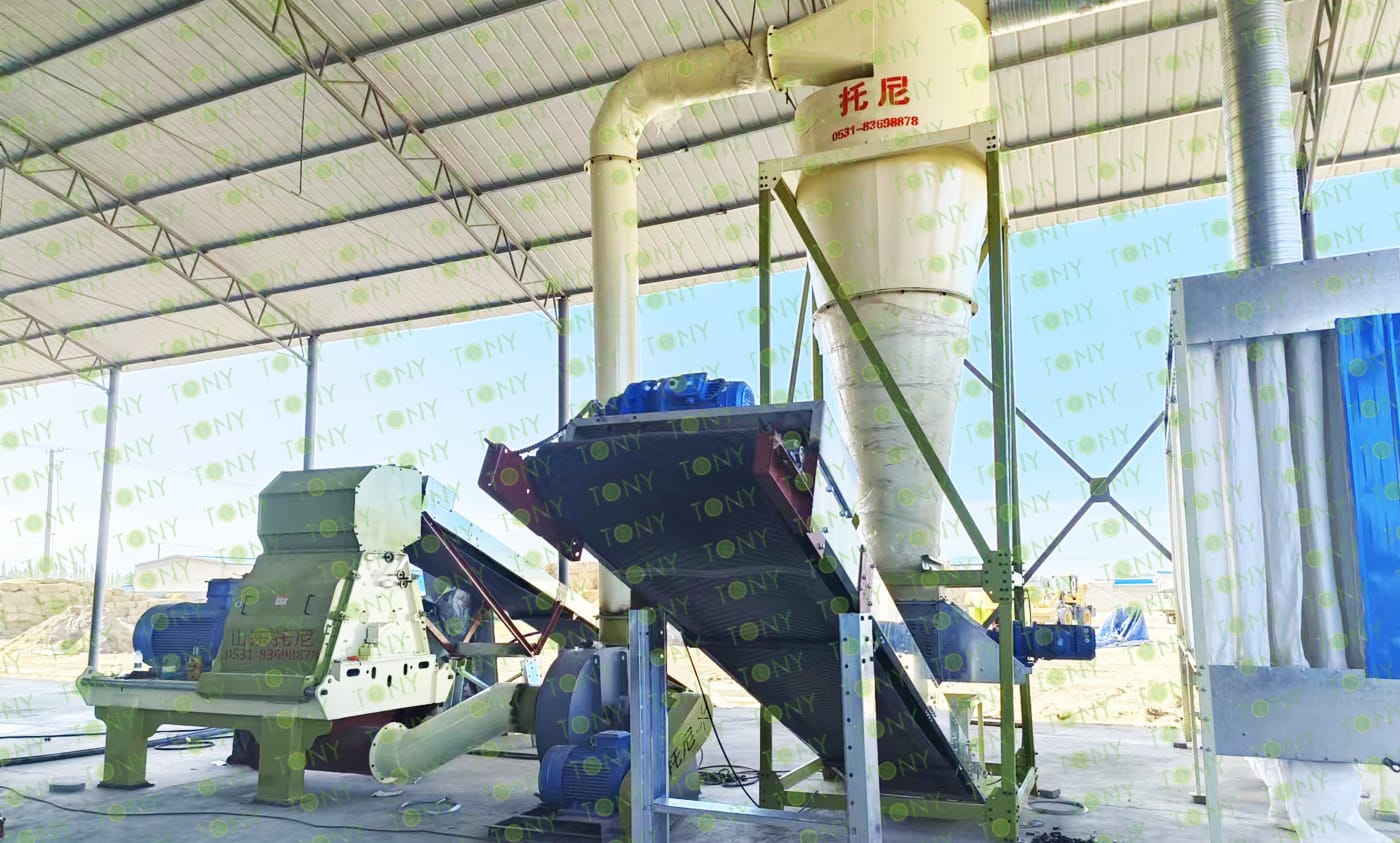
|
2.Fine Crushing Process: A.The process is mainly used to crush 60-70mm corn stalk pieces into 8-14mm sawdust. B.Capacity:4-5 tons/hour. C.TONY uses high efficiency hammer mill TFD75-132KW-1Set. Main parts: (1).TONY high efficiency hammer mill. (2).90 hole galvanized dust collector. (3.)Sawdust conveying fan. (4).Cyclone with airlock. (5).Electrical cabinet. TONY can supply you all the products with excellent quality and excellent quality. You can contact TONY to get the newest quotation with detailed specification. |


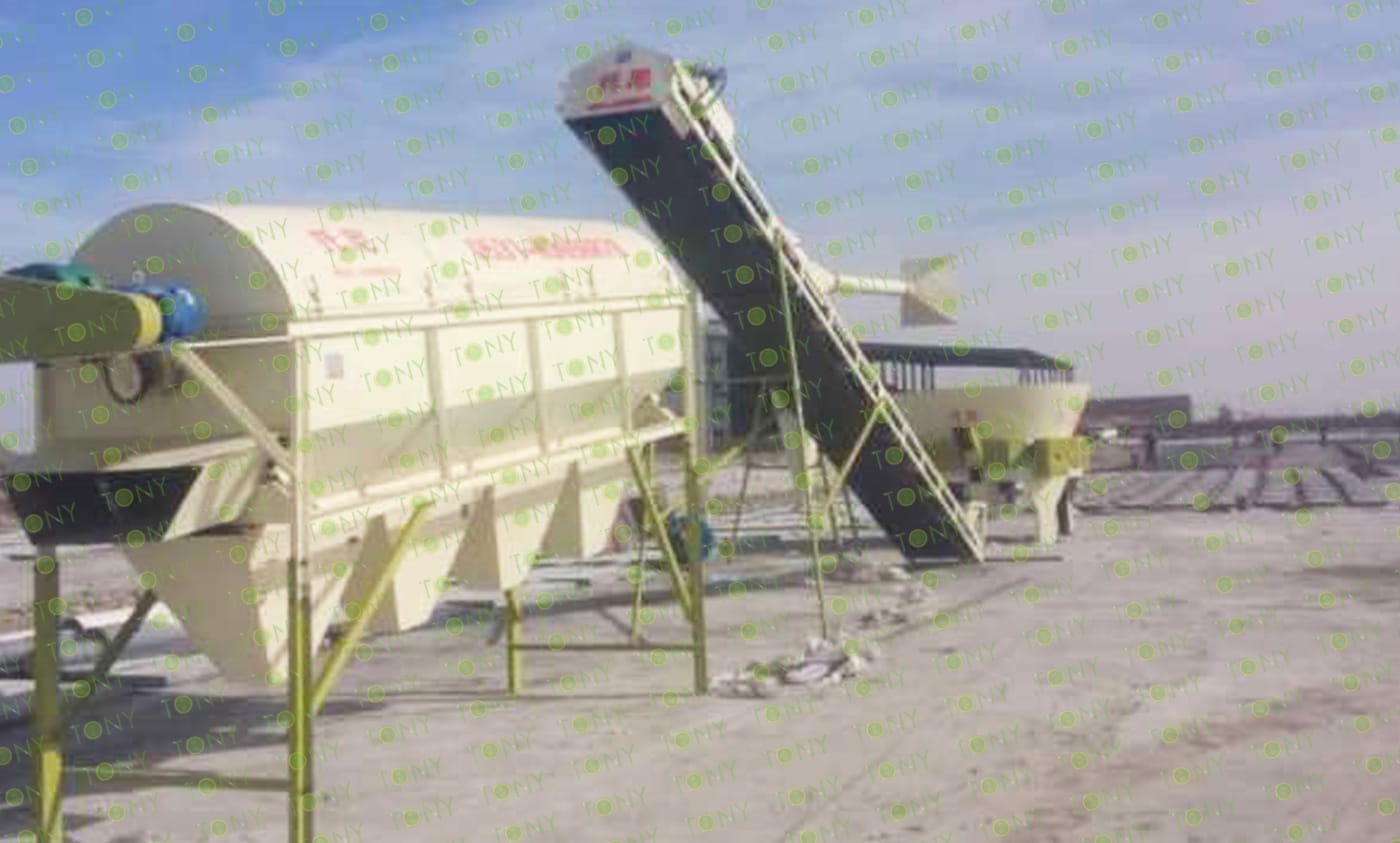
3.Soil Removal Process:
A.This process is mainly used to sift the dirt from the sawdust into clean sawdust.
B.TONY chose 1 sets of TONY Soil Removel Screener with capacity 4-5 Ton/Hour.
Main Parts:
(1)TONY's new TONY Soil Removel Screener.
(2)Closures Inlet Oulet For Sieve.
(3)El. Cabinets

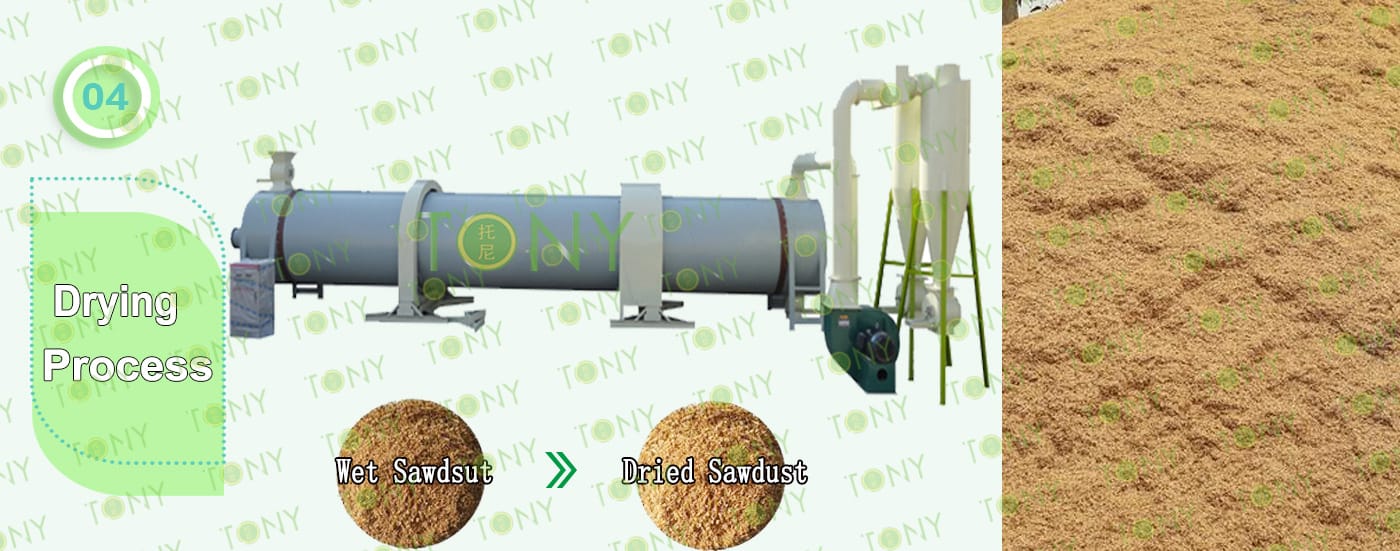
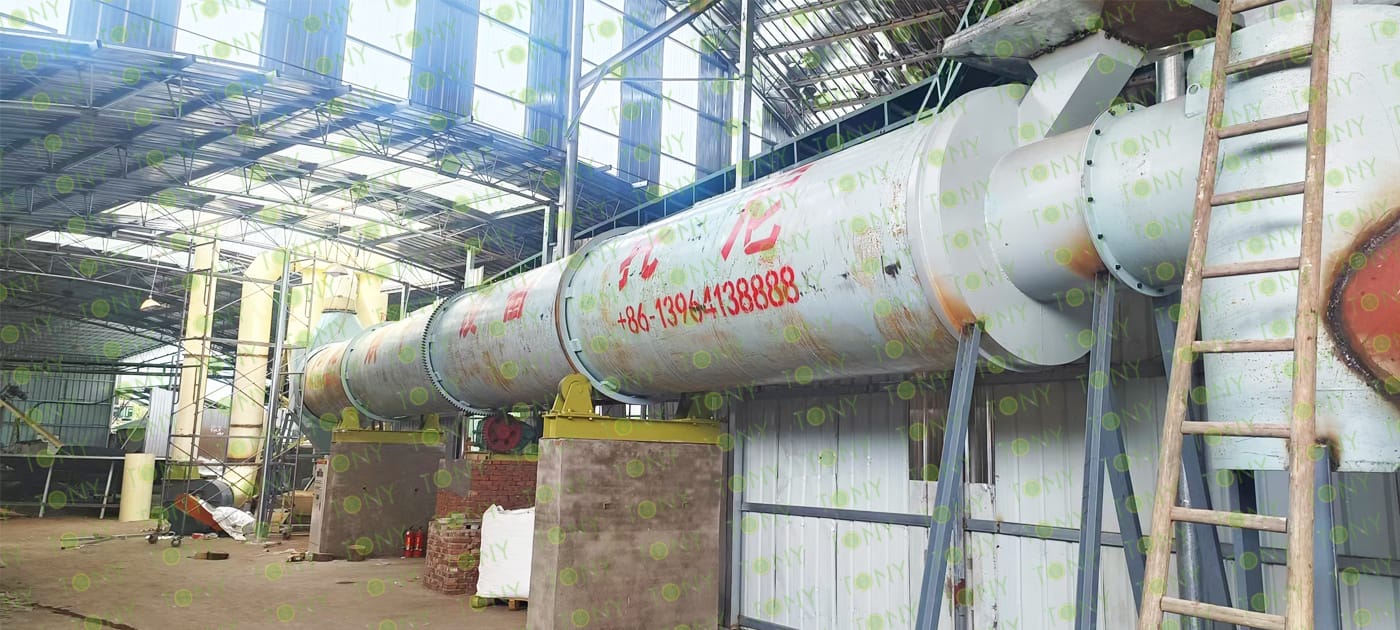
|
4.Sawdust Drying Process: A.This process is mainly used to dry the sawdust from 55% to 10-15%. B.Capacity:4-5Ton/Hour. C.TONY use 1sets of 2*18.65m single layer rotary drum dryer for this process,this customer use biomass waste wood as buring raw material with hot stove 4*2*2m.TONY hot blast stove is made of firebrick pan, shell with H steel plate as the frame.There are 3 layers of fire blocking device inside, which can effectively prevent the fire from entering the tumble dryer. TONY dryer use spiral tube material, which has higher heart rate and is not easy to deform. Unlike other manufacturers with iron plate splicing welding, very easy to deformation. Main Parts: (1)TONY's Rotary Drum Dryer Main Body. (Reducers With Motors and Pips.) (2)TONY's Wood Waste Hot Stove. (3)Fan Blower+Cyclone With Airlock. |


|
5.Pelleting Process: A.This process is mainly used To Products Pellets With φ6-8mm. B.Biggest Capacity: 2-2.5 Ton/Hour/Set. C.The Customer Chose 2 Set Of TONY Brand Vertical Ring Die Pellet Machine TYJ551-III-132KW Total Capacity 4-5 Ton/Hour. Main Parts: (1)TONY's new vertical ring die pellet machine. (2)Cyclone and bags dust collectors. (3)Bearings automatic lubrication system. (4)Electrical cabinets. You can chose TONY new type SS304 pellet machine or old type MS pellet machine. |
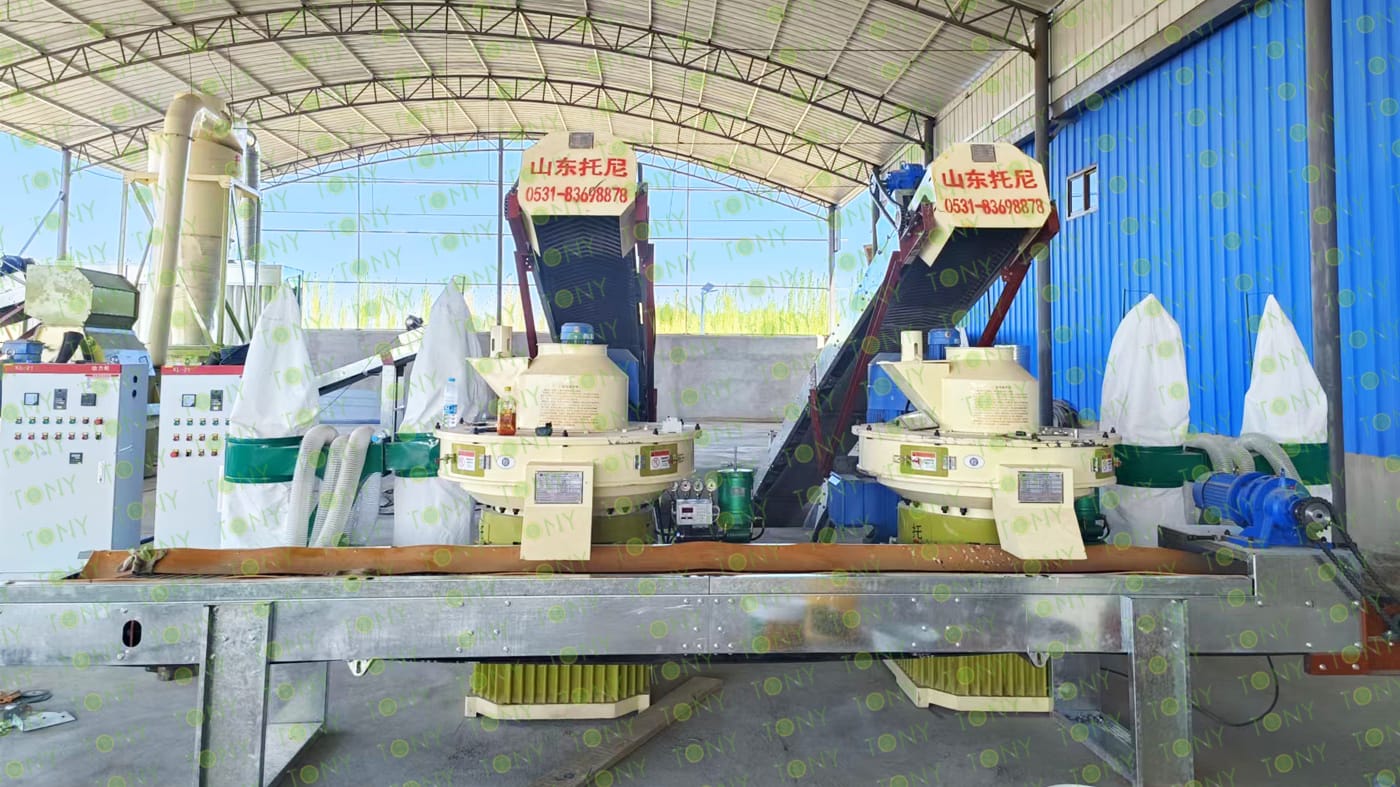

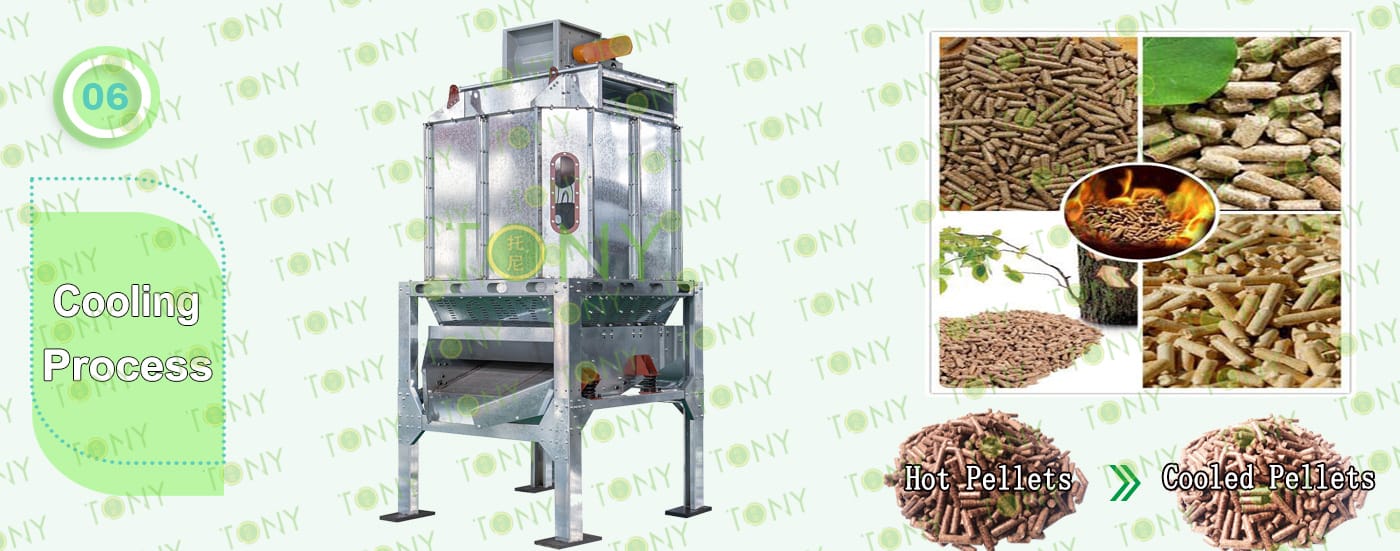
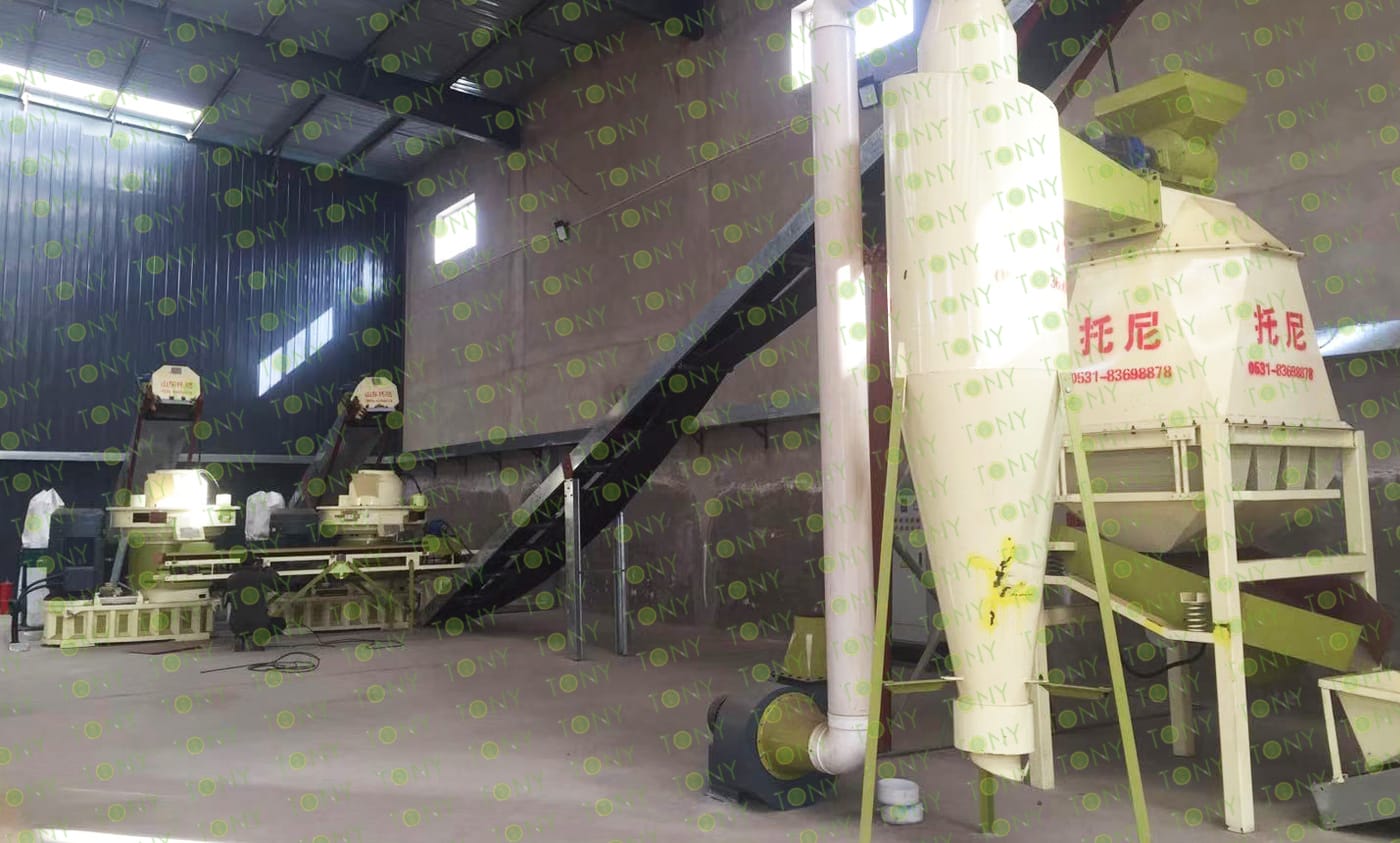
|
6.Cooling Process: A.This process is mainly used to To Cool Pellets From 80-90℃ to 20-30℃ B.The Customer Chose 1Set Of TONY Galvanized Cooler Separator With Capacity 4-5Ton/Hour Main Parts: (1)TONY's new Galvanized Cooler Separator With Vibrating Screen. (2)Cyclone and bags dust collectors. (3)Fan Blower. (4)Connect Pipes. |

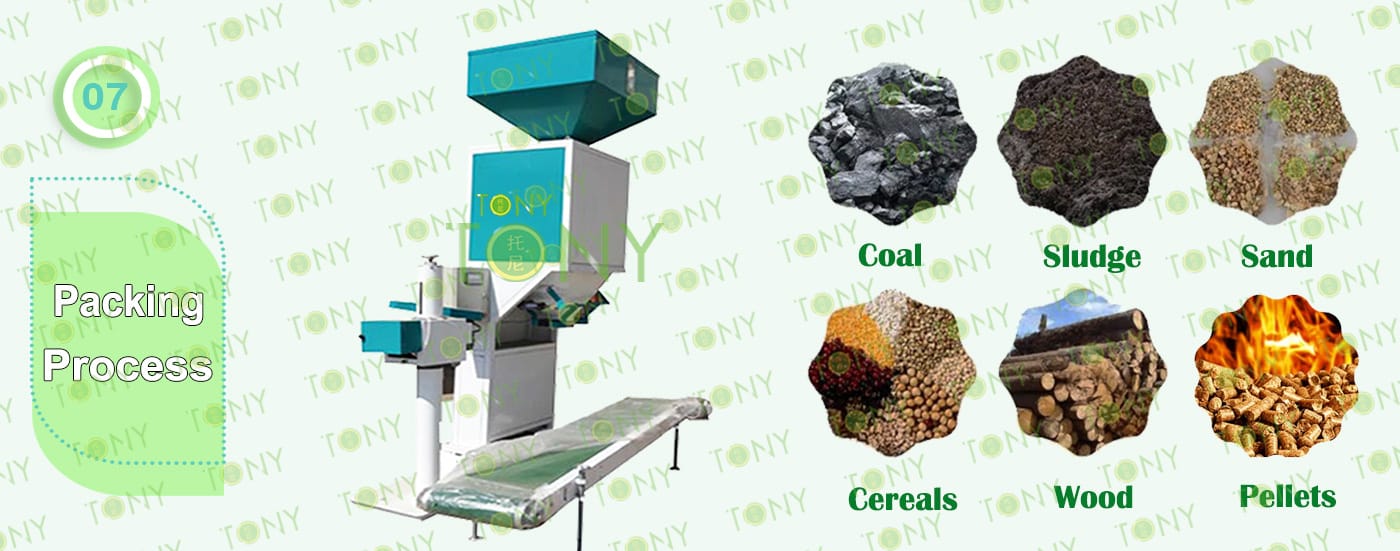

7.Packing Process:
A.This process is mainly used to Packing Pellets To 15-50KG/Bags.
B.The Customer Chose 1 Set Of TONY Semi-Automatic Packing Machine With 4-5Ton/Hour.
Main Parts:
(1)TONY's new TONY Semi-Automatic Packing Machine.
(2)Sew Machine,Buyer Can Also Chose Hot Seal Machine For Chosen,To Confirm With TONY For The Price Difference.
(3)Bags Transportation Conveyors.
(4)Feeding Inlet Silo With 1㎥.
(5)Electrical cabinets.

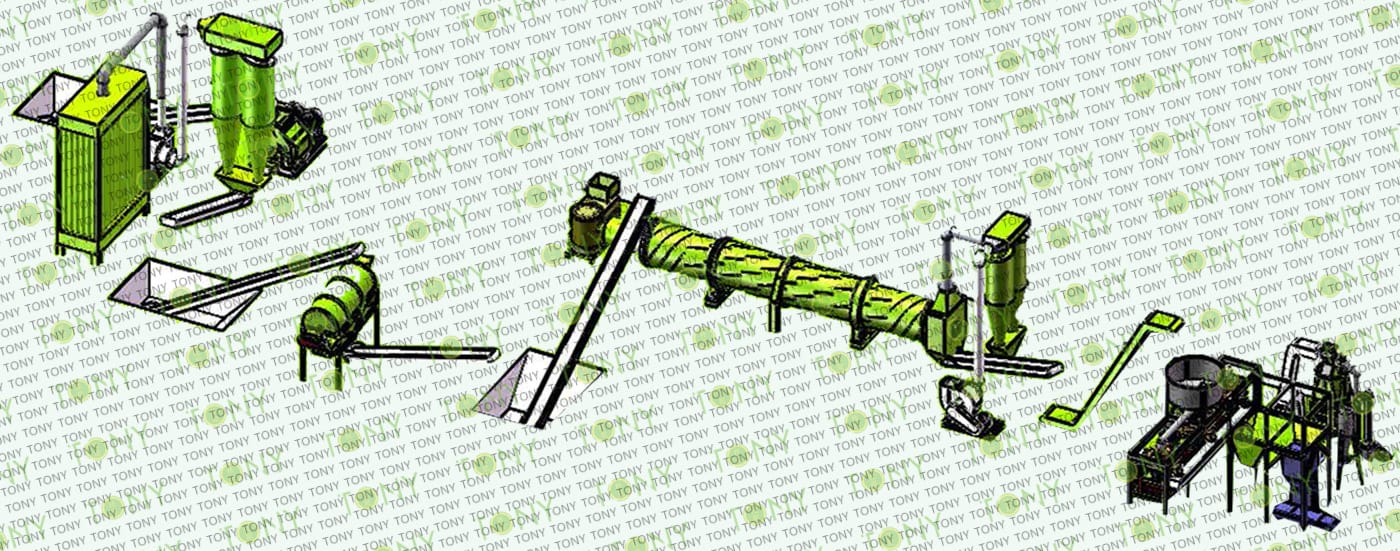

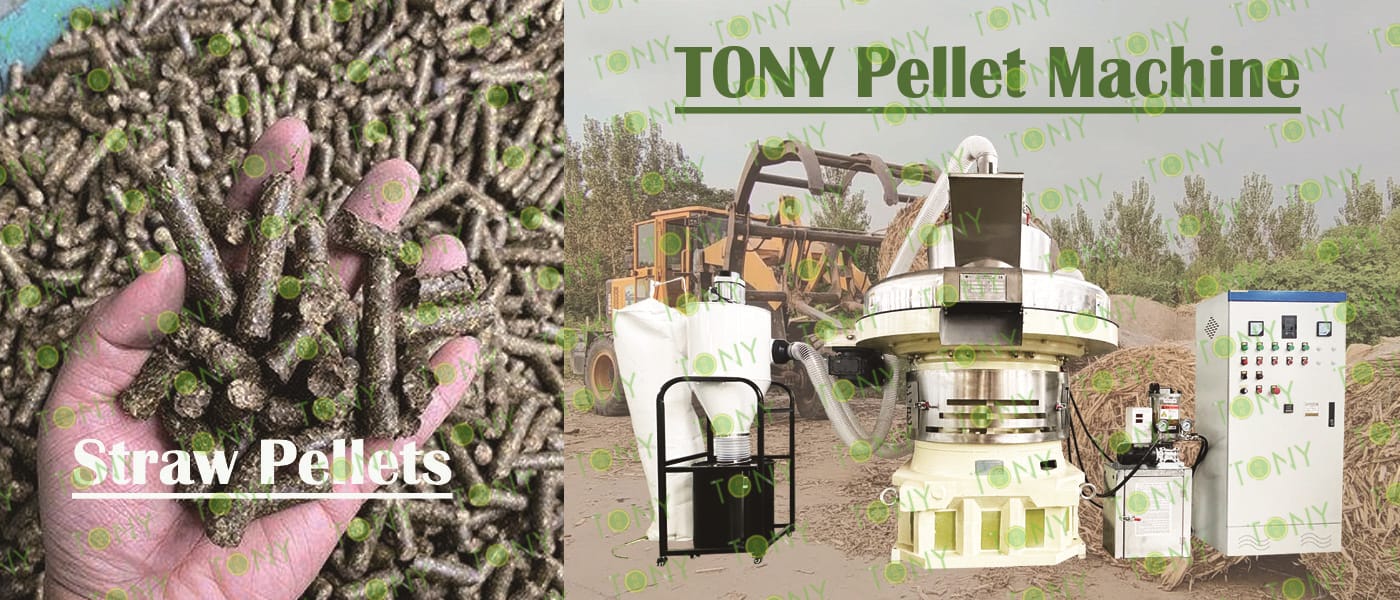
1.In some agricultural countries,a large number of corn stalk resources are being made into biomass pellets for comprehensive utilization. At present, with the increasing demand for energy and the depletion of coal resources, countries all over the world pay more and more attention to biomass energy and have formulated and implemented corresponding development plans. At present, all countries in the world are trying to develop bio-alternative fuels.
2.The benefits of starting a corn stalk processing pellet business are numerous. First of all, the growth cycle of corn stalks is short, there are a lot of resources, and the cost of raw materials is very low. This means you can get a return in a shorter period of time and have a greater advantage in terms of cost control. Secondly, corn stalk processing pellets, the current market competition is relatively small, which provides entrepreneurs with more opportunities and space.
3.Of course, professionalism is essential to success in this industry. You need to understand the growth habits, processing processes, market demand and trends of corn stalks.
Only by continuous learning and practice, and constantly improve their professional skills and market acumen, can they stand out in the competitive market.
4.If you are a visionary entrepreneur, you may wish to consider entrepreneurial opportunities in corn stalk pellet processing. This will not only bring you great profits, but also protect the environment and promote sustainable development.Make a contribution. In this era full of opportunities and challenges, let's seize the opportunity to make money by processing corn stalks into pellets and jointly create a better future!

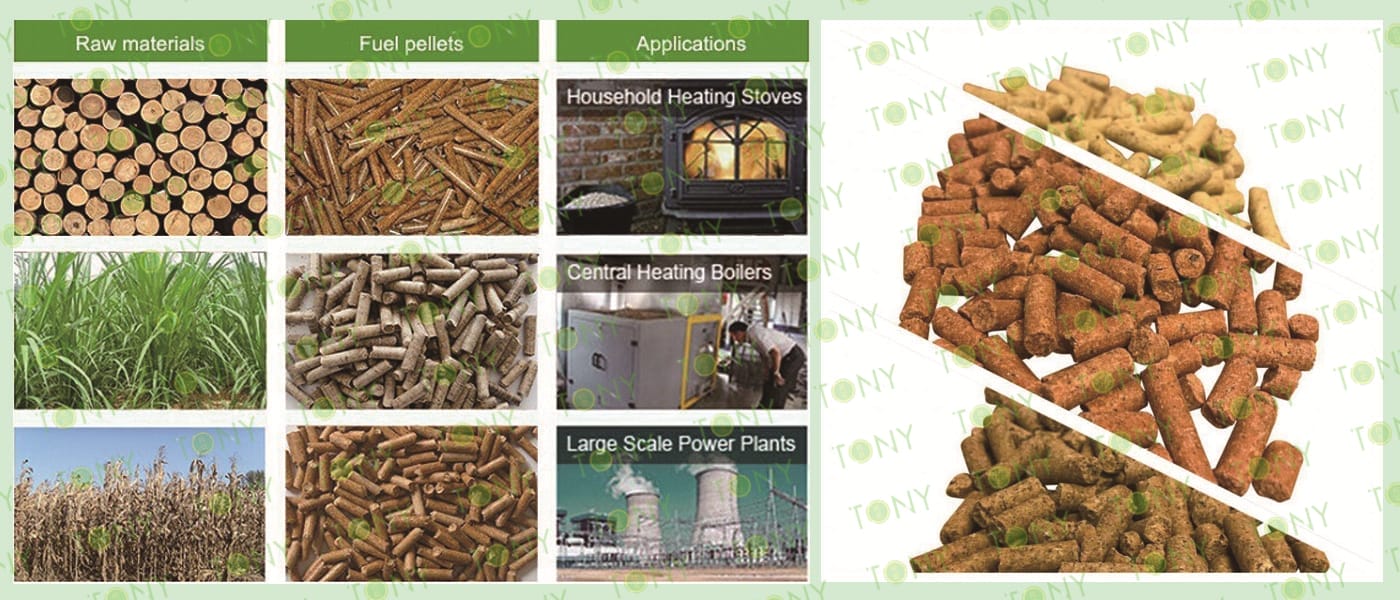
Advantages of Corn stalk as biomass pellet fuel:
Corn is a relatively short crop with a growing cycle and is generally planted in large quantities, so it will produce a large amount of corn straw resources. It can be used to produce biomass pellet fuel.Compared with traditional fossil fuels, corn stalk pellets have several advantages:
1.Clean And Environmental Protection, Green Energy: After testing, the sulfur content of corn stalk particles is 0.16% ~ 0.22%, far lower than the sulfur content of coal 1% ~ 3%, which is an environmentally friendly clean energy.
2.Low Cost, High Added Value: Raw materials are very low, low cost of use.The ash after combustion, rich in calcium, magnesium, phosphorus, potassium, sodium and other elements, is the best inorganic fertilizer.
3.The Density Is Larger, Convenient Storage And Transportation: The density of corn stalk pellet fuel is large, the density is above 1.2, and the area is less, which is convenient for transportation and storage. Available in bag for easy access.
4.Application: Corn stalk particles are easy to ignite, high calorific value, strong firepower, suitable for rural areas, towns, units and families, is the ideal fuel for heating, bathing, canteen cooking, boiler burning and straw power plants.

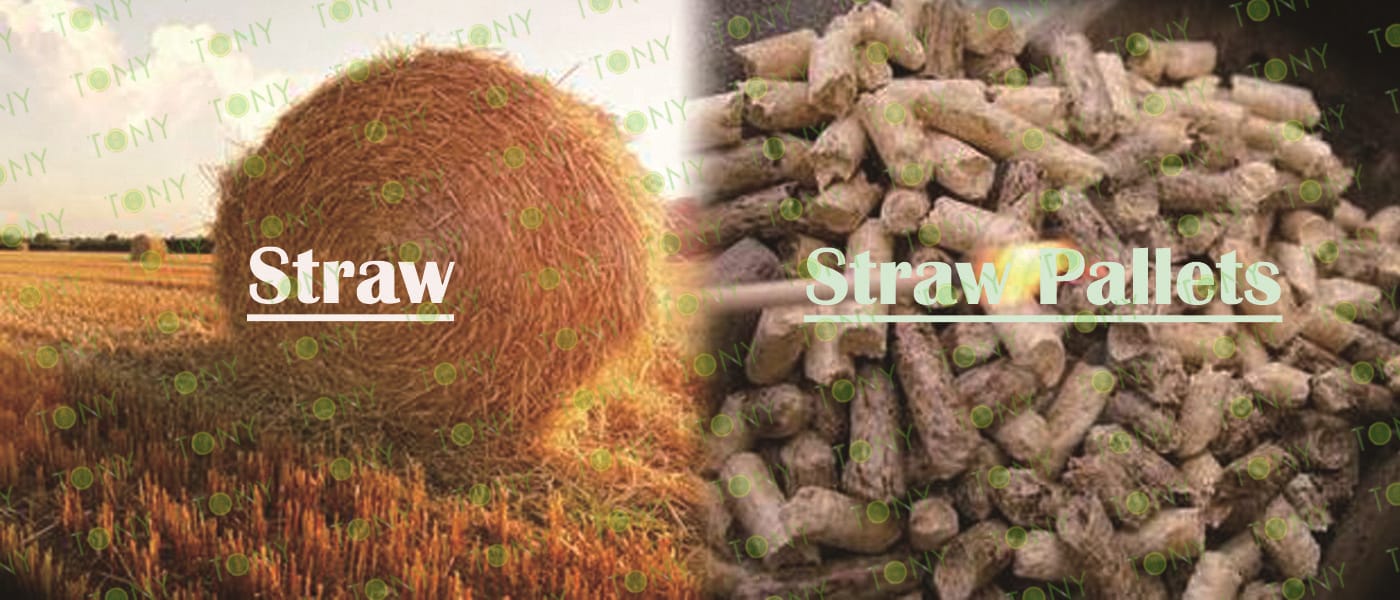
1. Characteristics And Application Scope Of Corn Stalk Pellet Fuel
Corn stalk pellet fuel is a renewable fuel made from corn straw through crushing, screening, drying, pressing and other processes. Its characteristics include high energy density, easy storage, easy processing, non-toxic and harmless, smokeless and odorless combustion process, etc. Corn stalk pellet fuel has a wide range of applications, mainly including household heating, industrial heat supply, power machinery fuel, etc.
2. Current Situation Of Corn Stalk Pellet Fuel Market Demand
Using corn stalks to make biomass pellets is not only an environmental protection project, but also a new energy industry, and a new way to effectively use surplus resources, with huge potential market demand.
At present, farmers do not know enough about straw. Processing enterprises lack confidence in the comprehensive production benefits and effective utilization of straw; Relevant departments are developing industrial support and technology promotion support policies to promote the comprehensive utilization of straw, the use of corn straw to produce biomass pellets to form a complete comprehensive utilization of straw industry chain, can form a new economic growth point, increase farmers' income, effectively reduce carbon emissions, but also help the government to solve some of the employment problems.
3. Analysis Of Pellet Fuel Market Prospects Of Corn Stalk
If the waste straw resources can be comprehensively utilized, the rational and scientific utilization will have great economic value. Recycling, turning waste into treasure, into new energy fuel. At present, natural energy resources are decreasing, but people's lives are inseparable from energy, in order to live better and better, the society can develop healthily, we only develop new energy, is the best new way out.
As a biomass pellet fuel, corn stalk particles belong to modern clean dyes, which are suitable for urban coal-fired boiler equipment, can replace coal carbon, and can be used in power plants. Straw granulation value is high, flammable, less ash, less pollution, more fuel saving, reduce the cost of use, after forming the straw particles, small size, resistance to dye burning, high density, convenient storage and transportation. With the continuous development of society, small and medium-sized enterprises can only survive well if they keep up with the pace of The Times. Corn stalk pellet machine can make enterprises and environmental protection harmonious development. As a new era of environmental protection and energy saving equipment, investing in a corn stalk pellet machine has great prospects for aspiring young people who are starting businesses.

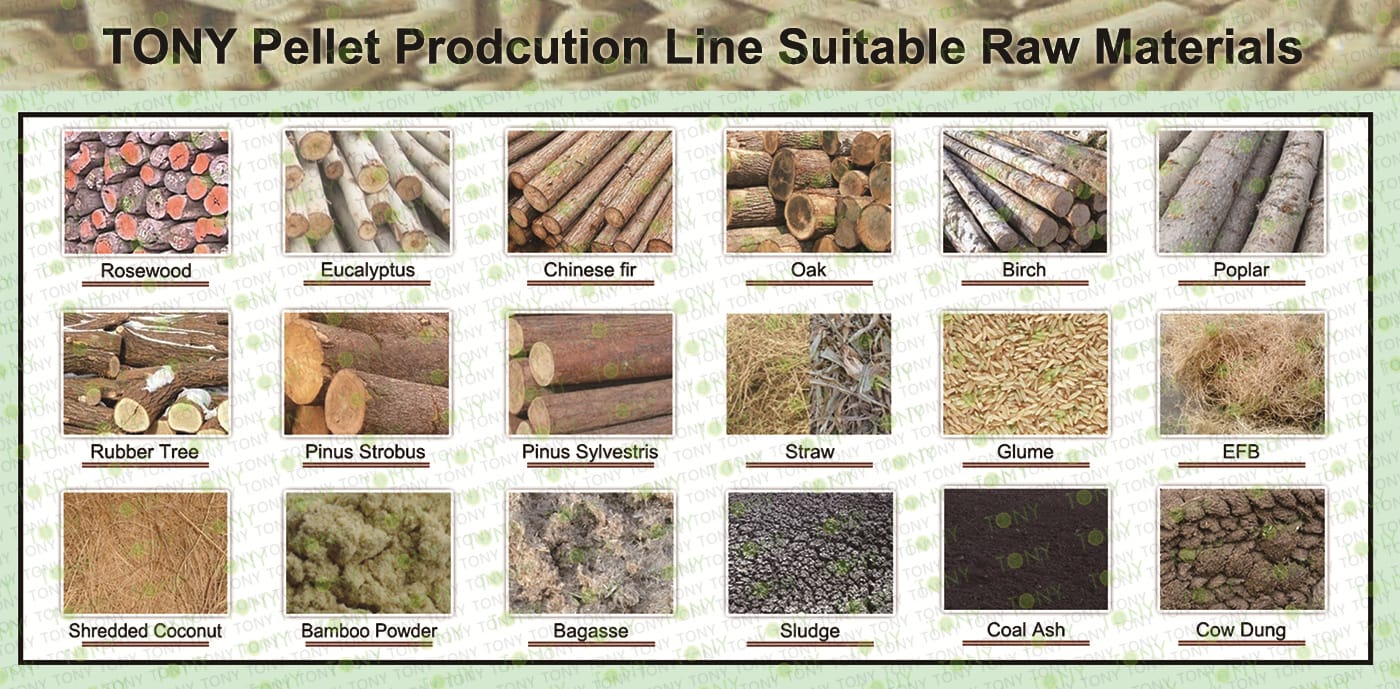
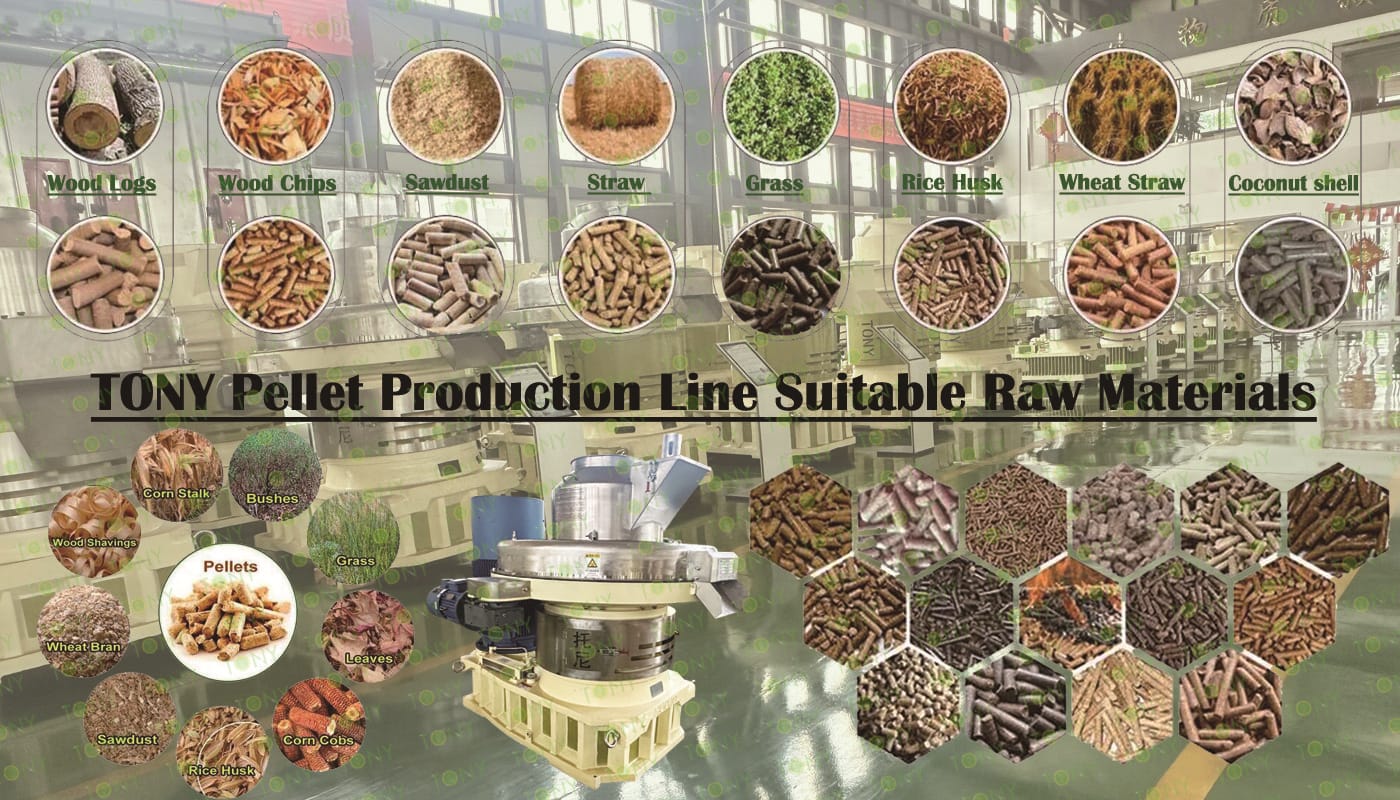

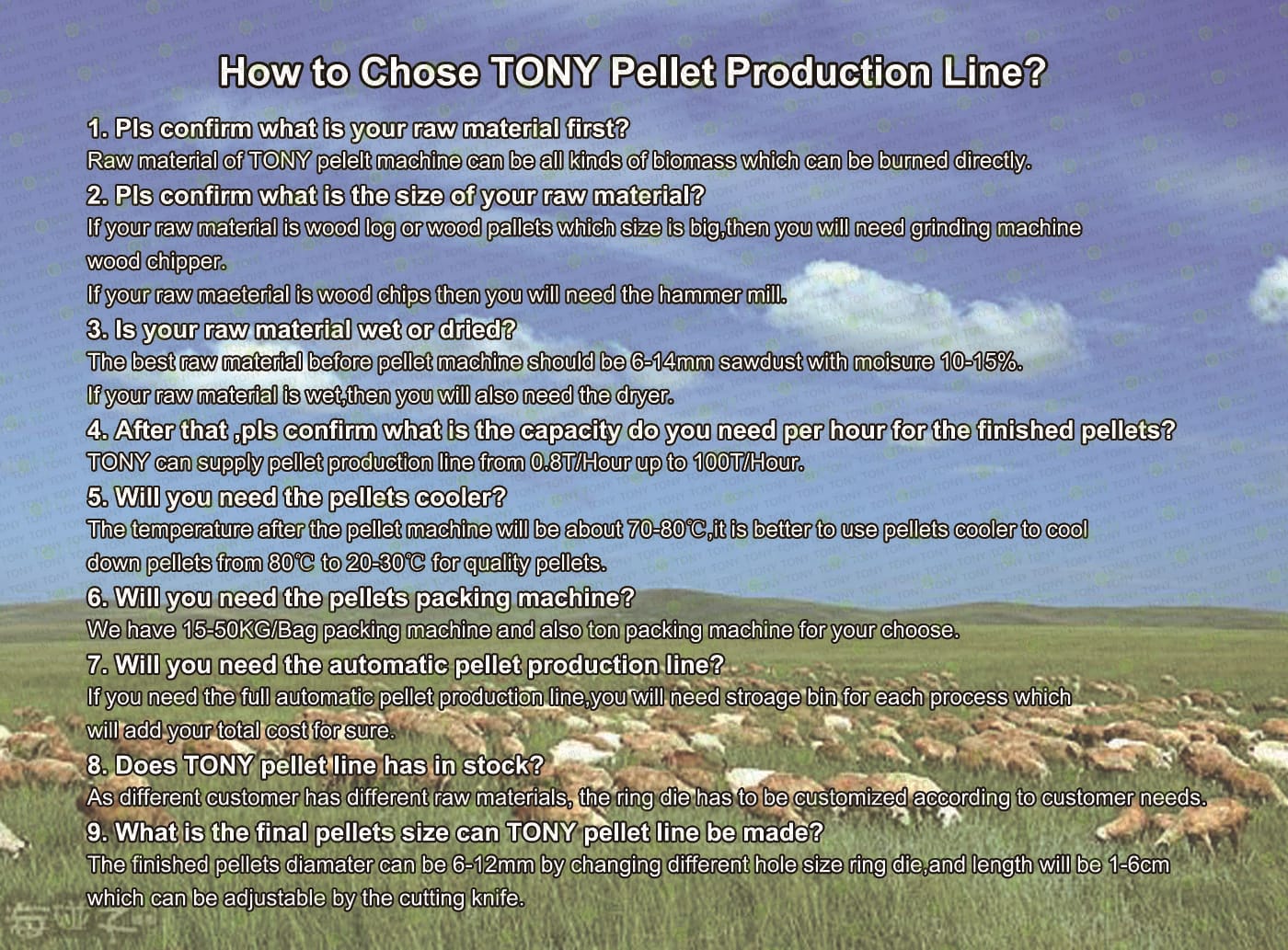

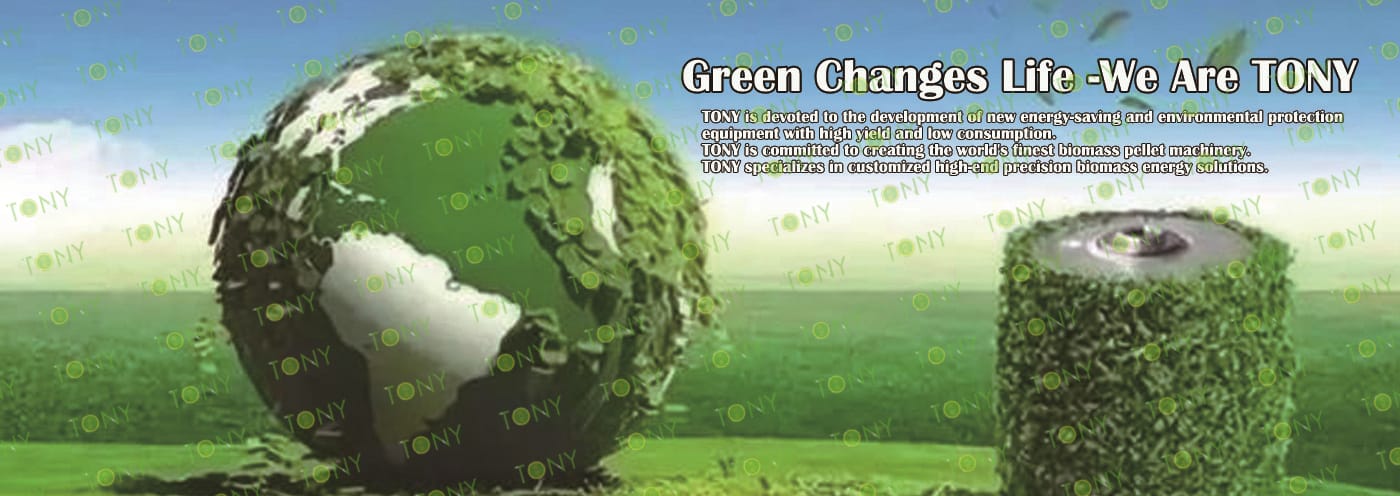
2025 Tony Machinery - All Rights Reserved. Map